Art, Maths, Electronics and Micros: The Late Work of Stan Ostoja-Kotkowski
Abstract
:1. Introduction
2. Context and Background
3. Brief Survey of Ostoja’s Work
He was a catalyst for a more adventurous style of theatre in Australia and he brought a modern European approach to filmmaking. His op art introduced many Australians to this genre …Reviews of his films, theatre sets and kinetic productions were not always positive, mainly because Ostoja was always pushing audiences to the edge, which sometimes made them uncomfortable. He was accused of commercialism, as he appealed to a broader audience than the art gallery clientele. He was an artist who managed to live from his art, but it was his art that was important to him.
4. Ostoja’s Micro-Computer Works
We see many similarities between Ostoja’s earlier and later practice, where he was reliant on others to a significant degree in the production of his artworks. In that sense, the microcomputer works represented a continuation of collaborative practice rather than a departure, and this reliance on others is particularly seen in Russell Dahms’ building of custom electronics for the BP Star commission, as well as other projects.Of course with colour television the experiments could go much further. I spent some time [in 1962] at the Marconi Electronics Research lab in Chelmsford, England, and they have some beautiful equipment there to project colour television onto a screen. And when I got there first they showed me how beautifully they could project these images. They made up the image from something pre-set, sent it through the system and projected it onto a screen; and there were beautiful images on the screen in colour. So I said, “Well can we now start to do some experimenting with this,” and they said “What do you want?” “First of all I want to get the thing out of register”—“What do you mean, out of register’—we just spent two days getting the alignment on these”. But they co-operated, and we started experimenting, and by the end of the day I just didn’t have to do anymore. The ideas just kept on pouring, one after the other. What could we do? How could one do it?—let’s separate the reds from the blues, let’s shift them, let’s curve them. By the end I could just press a button and get a beautiful image there. This was by trying to explore, by trying to do things which are not the normal things; to get off the main way and try to experiment. That’s where you’re going back to experimentation and trying to discover things.I remember the first time we tried the experiments here at T.V. studios in Australia. The producer threw his hands [up] in despair—“What are you trying to do, you’ve lost all the half-tones”. I said, “Marvellous, good”. Now today to lose half-tones is practically a normal thing in television, but it took 5–6 years to convince the director you could get a beautiful picture without the half-tones.
4.1. Christmas Stars on St Kilda Rd
I wrote a program on the computer so Ostoja could program the images for the side of BP House in Melbourne for the Christmas display. Basically it was in a BASIC language on the BBC Micro. And I wrote a program so there was a grid on the screen, and he would manually—I think it was with a mouse back then, a very primitive mouse—go and turn on which lights he wanted to be on in that particular frame. He would then save it, he would then increment to the next frame, and then he would turn on and off the next light sequence he wanted for the exhibition. And then of course he could play it back and he would probably spend two weeks doing this, because it was like a nine by nine matrix of these lights. And when he’d finished with it I somehow got it out of the BBC Micro, probably on a floppy disc, and then I took it wherever I worked [where] there was an EPROM programmer. So I transferred the raw data into an EPROM and I would just clock that out with an opto-coupler multiplex circuit, and it would actually drive the light banks through the triacs. Because in Melbourne … someone else had made this big three-phase electrical controller which controlled these light panels on the side of BP House … And each one of them was kilowatts, and so it had this big three-phase control system. But I just outputted the information from the EPROM to this triacs which controlled the lights…and it would step through the images.(private communication)
Dahms made it possible for Ostoja to ‘program’ this BP Christmas star, without doing any actual programming. Sharing archival images with us, Dahms has indicated to us that Ostoja’s theremins were also programmed on the Archimedes (see Figure 11 and Figure 12) (private communication, 18/7/16). Interestingly, these were artworks or instruments that were created with the micro, but which did not require the micro, and so looked more like electronics than computer art. As Dahms says: “A lot of it was dedicated electronics to produce a solution. It may have involved a computer to program it or to design it, but invariably it was mapped out into a standalone system that could function without the computer.”Ostoja would ring up and ask how to use some software feature on the program, and sometimes we hadn’t even seen the program. Or he couldn’t get his computer to start, or this sort of stuff … And I had a group of friends as well … and they were into computers and they had the BBC micros. They went to that club you mentioned, the computer club—Beebnet … They would go to those meetings and describe all the advances in computers. And to some extent I relied on them a little bit on the computer side of things ….(private communication)
4.2. Mandelbrot Works
It offers the artist not only a range of colours, but a range of forms and shapes. When using the Mandelbrot, the graphic image on the screen represents the beauty of the mathematical formula; the artist recognises and responds to this beauty”.
4.3. Landscapes with CGI
For the future, Ostoja is working to devise a method which reproduces computer art in its original clarity and colour, as it appears on the screen. At present, he feels that the brilliance of the screen images is lost when transferred to film. He feels optimistic that research will find a solution and believes that liquid-crystal technology may well provide an answer, allowing an image to be transferred to a liquid-crystal display plate or board.
5. Concluding Thoughts
Ostoja’s practice complicates the scenario Kolomyjec outlines and offers a useful case for rethinking the narrative around the extent to which artists were able to experiment with micro-computers in the period. Often, the narrative seems to be that artists were either hamstrung by the software they had available, or by their limited coding abilities, and that these were factors that impeded experimentation. Ostoja is neither an artist-programmer nor just a user of off-the-shelf application software. He collaborates not just with programmers (Cepurneek, Dahms), but also with a technician with a deep expertise in electronics (Dahms), to undertake a range of artistic experiments that exceed the category of ‘software’ or ‘algorithm’. His extensive use of assistants was arguably a collaborative method that he was well used to from years of collaboration, working in labs, and befuddling technicians. He was heavily reliant on others to do the programming and circuitry, having no understanding nor grasp of either programming or electronics, and “no capability”, as Dahms put it. According to Dahms, Ostoja was always more interested in the outcome than in understanding how the electronics worked.9 Yet the Archimedes seems to have given him a remarkable degree of creative control. He could do much more on his own with the computer than with other equipment. Using Dahm’s program for the BP star, he could try different settings by himself; not to mention the countless hours he must have spent tinkering with the Mandelbrot images in editing programs. He once described the computer as the ‘artist’s apprentice’ (Harris 1989), and in a sense, for him, it was. As Edwards writes:In the beginning there was no application software. If a person wanted to be creative with a computer, i.e., be a computer artist, s/he had to either write algorithms or collaborate with someone who could. Application software often grew out of such collaborations or dialogs between artist/designers and engineer/scientists. People who knew how to write algorithms began to provide software for the less knowledgeable. Eventually, artist/designers acquired these skills for themselves.
Ostoja’s practice calls for a rethinking of the assumption whereby programming competence is thought to equal greater capacity for experimentation. His collaborative method of working with the microcomputer and others with specialist skills presaged many of the art-science collaborations that are undertaken today (such as the Synapse program run by ANAT). Edwards actually calls Ostoja an “artist-scientist” (Edwards 2009, p. 27). Other artists at the time were mostly doing solo works, whereas he was seeking out knowledgeable others who could take his art somewhere he could not on his own.He was able to harness the knowledge of others when his inspiration was not matched by his technological knowledge, and by doing so, extended the freedom of the artists who were to follow, who found themselves no longer bound by convention and form.
Author Contributions
Funding
Acknowledgments
Conflicts of Interest
References
- Beddard, Honor, and Douglas Dodds. 2009. V&A Pattern: Digital Pioneers. London: V&A Publishing. [Google Scholar]
- Brown, Paul, Charlie Gere, Nicholas Lambert, and Catherine Mason, eds. 2008. White Heat Cold Logic: British Computer Art 1960–1980. Cambridge: MIT Press. [Google Scholar]
- Budrewicz, Olgierd. 1982. Wsrod Polskich Kangurow. Warszawa: Wydawnictwo Interpress. [Google Scholar]
- Callas, Peter. 1994. An Eccentric Orbit: Video Art in Australia (Catalogue Essay). New York: American Federation of Arts, pp. 4–7. [Google Scholar]
- Cancel, Luis R. 1987. Introduction. In The Second Emerging Expression Biennial: The Artist and the Computer. New York: The Bronx Museum of the Arts. [Google Scholar]
- Edwards, June. 2009. Explorer in Light. Bibliofile, 27–33. [Google Scholar]
- Garda, Maria B. Forthcoming. Microcomputers. In Alternative Media Usage During the Decline of the Polish People’s Republic. Edited by Piotr Sitarski, Maria B. Garda and Krzysztof Jajko. Lodz: Wydawnictwo Uniwersytetu Lodzkiego.
- Harris, Samela. 1989. Computer Artist Takes a Byte of the Future. The Advertiser, December 14. [Google Scholar]
- Jenkins, Henry. 2006. Convergence Culture. New York and London: New York University Press. [Google Scholar]
- Jones, Stephen. 2011. Synthetics: Aspects of Art and Technology in Australia. Cambridge: MIT Press. [Google Scholar]
- Kolomyjec, Bill. 1987. A Little Piece on Algorithmic Art. Paper presented at SCAN Seventh Annual Symposium on Small Computers in the Arts, Philadelphia, PA, USA, October 9–11. [Google Scholar]
- Macdonald, Ian S. 2005. Josef Stanislaw Ostoja-Kotkowski: Explorer in Light and Sound. Ph.D. thesis, Charles Sturt University, Wagga Wagga, Australia. [Google Scholar]
- McKenzie, Heather. 1989. Requiem for a Paintbrush. The Australian Magazine, October 17, 56–59, 64. [Google Scholar]
- McKenzie, Heather. 1992. Images from Chaos. Craft Arts International 25: 62–64. [Google Scholar]
- Ostoja-Kotkowski, Stanislaw. 1975. Audio-Kinetic Art with Laser Beams and Electronic Systems. Leonardo 8: 142–44. [Google Scholar] [CrossRef]
- Peitgen, Heinz-Otto, and Peter H. Richter. 1986. The Beauty of Fractals: Images of Complex Dynamical Systems. Berlin: Springer. [Google Scholar]
- Scarfe, Robert. 1971. Untitled interview with Ostoja-Kotkowski. The Griffen, March 10, 3. [Google Scholar]
- Stelarc. 1994. Just Beaut to Have Three Hands (Interviewed by Martin Thomas). Continuum 8: 377–94. [Google Scholar] [CrossRef]
- Stringer, John. 1992. Ostoja’s Computer Graphics. [Google Scholar]
- Stuckey, Helen, Melanie Swalwell, and Angela Ndalianis. 2013. The Popular Memory Archive: Collecting and Exhibiting Player Culture from the 1980s. In Making the History of Computing Relevant. Edited by Arthur Tatnall, Tilly Blyth and Roger Johnson. Berlin and Heidelberg: IFIP/Springer. [Google Scholar]
- Stuckey, Helen, Melanie Swalwell, Angela Ndalianis, and Denise De Vries. 2015. Remembering & Exhibiting Games Past: The Popular Memory Archive. Transactions of DiGRA 2. Available online: http://todigra.org/index.php/todigra/article/view/40 (accessed on 30 December 2018).
- Sunday Mail. 1971. 20-story star. Sunday Mail, December 4, 12. [Google Scholar]
- Swalwell, Melanie. 2008. 1980s Home Coding: The Art of Amateur Programming. In Aotearoa Digital Arts Reader. Edited by Stella Brennan and Su Ballard. Auckland: Clouds/ADA, pp. 193–201. [Google Scholar]
- Swalwell, M. 2012. Questions about the Usefulness of Microcomputers in 1980s Australia. Media International Australia 143: 63–77. [Google Scholar] [CrossRef]
- Swalwell, Melanie, Helen Stuckey, and Angela Ndalianis, eds. 2017. Fans and Videogames: Histories, Fandom, Archives. New York and Oxon: Routledge. [Google Scholar]
- Taylor, Grant D. 2014. When the Machine Made Art: The Troubled History of Computer Art. New York and London: Bloomsbury Academic. [Google Scholar]
- The Advertiser. 1992. Laser Artist’s Dream in Sight. The Advertiser, January 25. [Google Scholar]
- The Advertiser. 1994. Master who was light years ahead, Obituary: Stan Ostoja-Kotkowski 1922–94. The Advertiser. [Google Scholar]
- Tofts, Darren. 2005. Interzone: Media Arts in Australia. Fisherman’s Bend: Thames & Hudson. [Google Scholar]
- UNESCO. 2008. Archives of Joseph Stanislaus Ostoja-Kotkowski. Available online: http://www.amw.org.au/register/listings/archives-joseph-stanislaus-ostoja-kotkowski (accessed on 30 December 2018).
- Victorian Heritage Database. 2019. Former BP House: Statement of Significance. Available online: https://vhd.heritagecouncil.vic.gov.au/places/183680 (accessed on 30 December 2018).
- Zurbrugg, Nicholas. 1994. Electronic Arts in Australia. Continuum 8. [Google Scholar]
| 1 | IBM’s 1977 micro-computer was the original personal computer or ‘PC’. |
| 2 | A description of “paintbox” type programs from the period reads: “paint systems; computers which either through software or design allow the user to draw or paint with the computer. The TV screen (or monitor) of such a paint system will typically contain two borders; one with either patterns or color bands that the user can select and another where the user can choose the ‘tools’ for painting the colors or patterns. Usually the tools are electronic symbols for traditional paint tools, i.e., a brush or pen with varying thicknesses or an airbrush…” (Cancel 1987, p. 9). |
| 3 | Ostoja’s frustration with the reception of his art in Australia is palpable in a 1970 interview:
|
| 4 | Built from 1962–1964 and converted to apartments in 1995, the building at 1–29 Albert Rd, Melbourne (formerly BP House) is now known as the Domain Building. It is on the Heritage Council of Victoria’s Register, considered to be “of state significance as an example of the changing international perceptions by 1960 of the International Style tower”. The Statement of Significance notes that “the combination of architecture and art in the building, a prominent international idea at the time, incorporating a Competition winning foyer mural by Adelaide artist, Stansilaw Ostoja-Kotkowski [sic], and cast bronzes sculptures by noted Victorian sculptor, Norma Redpath, in the Theatrette foyer and exterior façade (Victorian Heritage Database 2019). |
| 5 | We have not been able to definitely resolve the date or the computer system that the star was programmed on (BBC Micro or Acorn Archimedes). Dahms remembers it being a BBC Micro, but we have not found any other evidence that Ostoja had a home computer any earlier than the Acorn Archimedes in 1989. Based on a photo we found in the Warsaw archive, we suspect the computer used was an Archimedes (based on the coloured keys layout on the keyboard and the type of monitor). |
| 6 | Letter from Ostoja to MMT, dated 5 Dec 1989. The special exhibition “Computer Art” for the 1990 Adelaide Festival was cancelled, so it was not shown then. |
| 7 | Electronic media art was excluded from the 1992 Adelaide Biennale of Australian art by the curator. The landscapes with CGI seem to have been shown at the 1994 Adelaide Festival:
Some documents suggest that the presentations of Ostoja’s computer graphics were set to music. We found one slide in the archival collection saying in Polish: “Computer graphics with Vangelis” (SLSA PRG 919/21/242). Russell Dahms remembers being invited to slide shows set to music at Ostoja’s home, so this seems plausible. |
| 8 | Though Ostoja did not belong to this cohort, he was clearly known and respected by local artists. He corresponded with Stelarc (there was talk of them collaborating on a project in Adelaide, but the funding didn’t eventuate) and Stephen Jones. Stelarc noted that:
|
| 9 | Ostoja was eloquent on the role of computers in art, and the potential he saw for computing: it was only ‘natural’— “painters will move from brushes to …” computers (SLSA PRG 919/3/58). He was always looking for new techniques and possibilities, always in search of the artist’s palette of the future that would combine science and art. Electronics played a significant part in his vision, from early on. For example, in an interview from 1970 he said: “Electronics today helps us to execute ideas which we could once only dream about.” And “Exhibitions around the world have proved that electronics can be used very successfully in the works of art, in the exhibitions and the exhibits” (Scarfe 1971). But while electronics was central to his vision, he did not feel that he himself had to master the domain. In the same interview he comments, in response to the question: “… to be able to do electronics you must surely have had electronics training?”, “It’s analogous to you driving a car without knowing how the car is built, you don’t have to know how the engine is built in order to know how to [drive] it”. In McKenzie’s article, Ostoja is quoted as saying: “A pianist doesn’t have to know how to build a piano to play it” (McKenzie 1989, p. 64) |
| 10 | We are still searching to see whether there might be a demo-scene connection. |
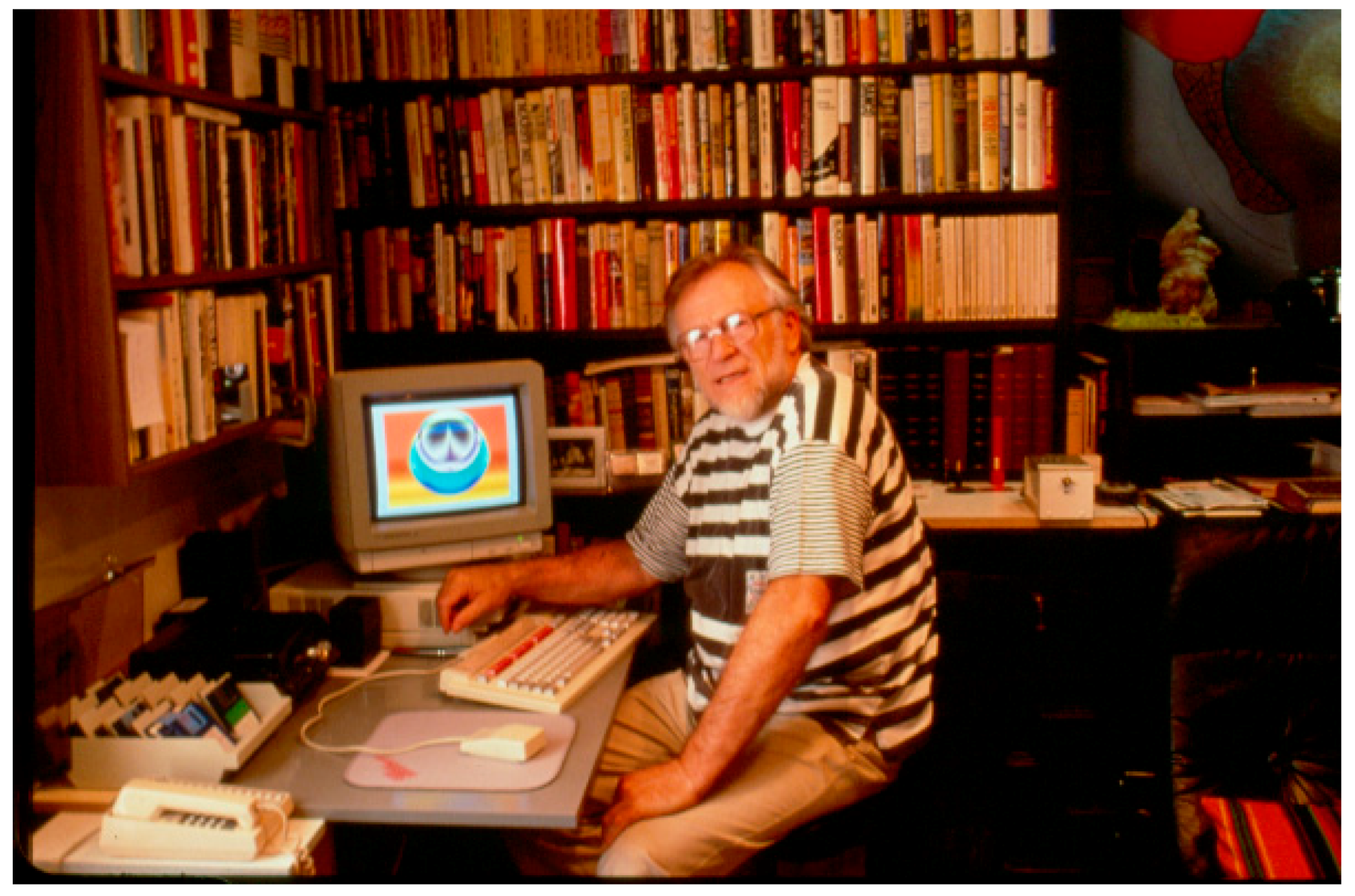
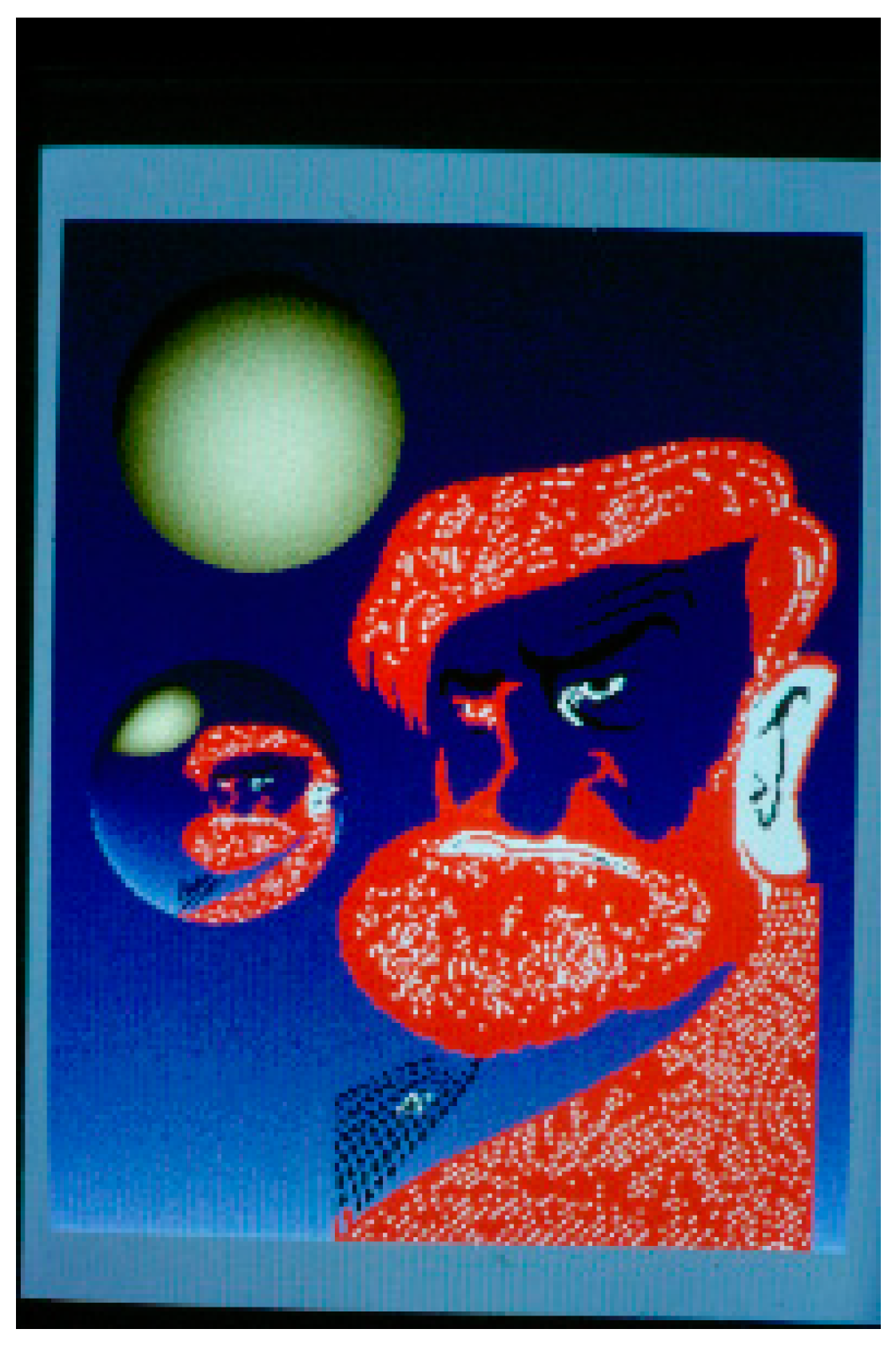
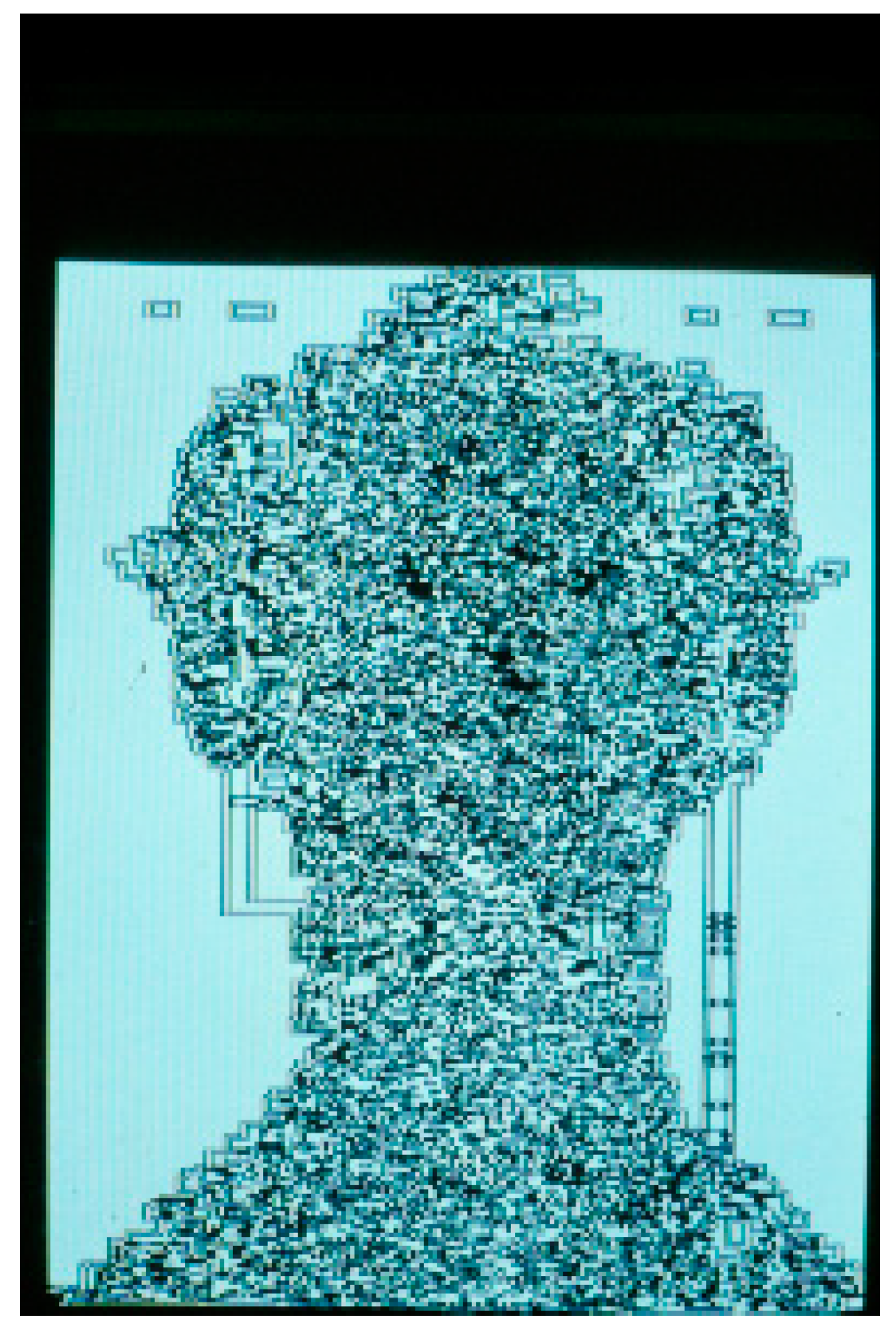
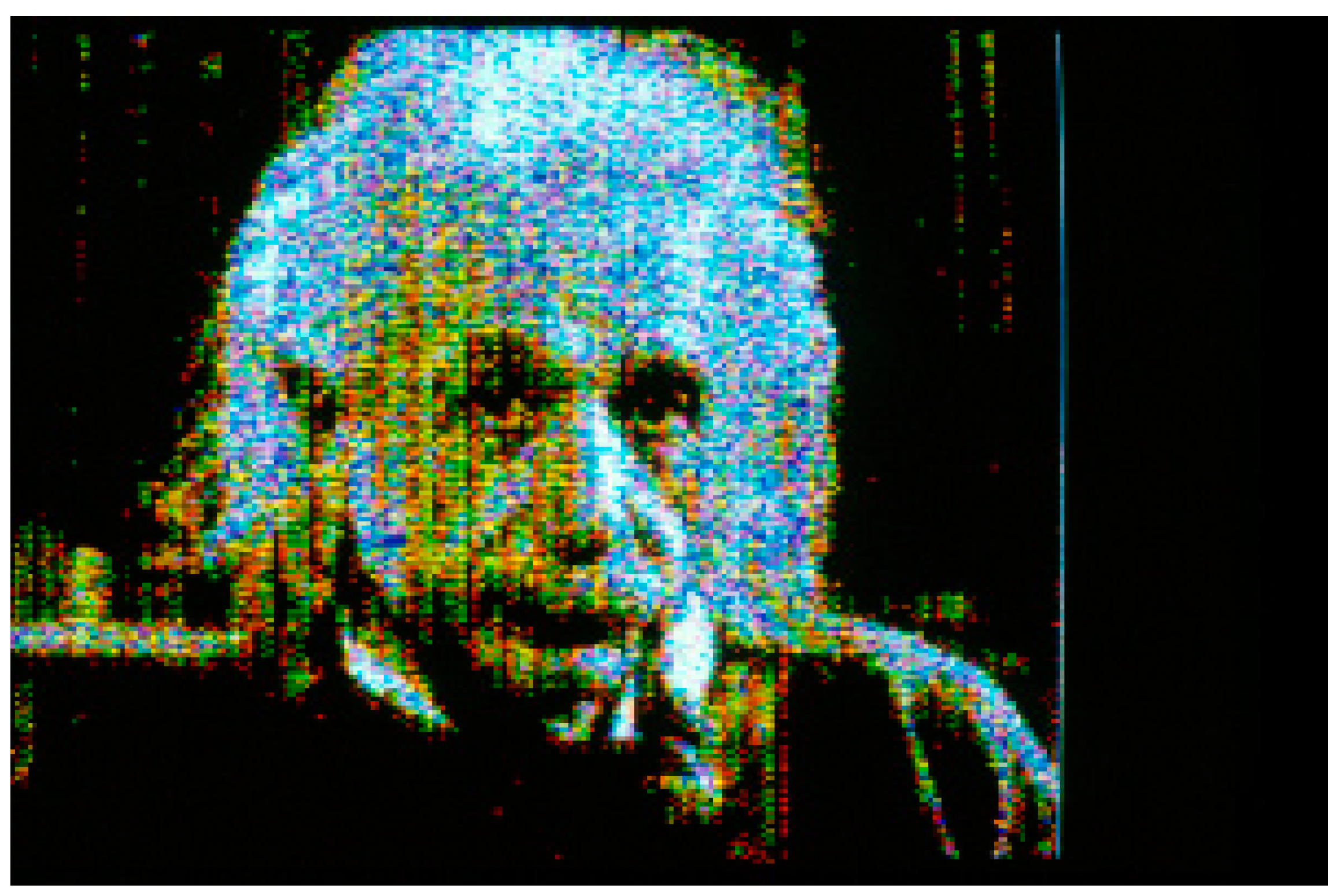
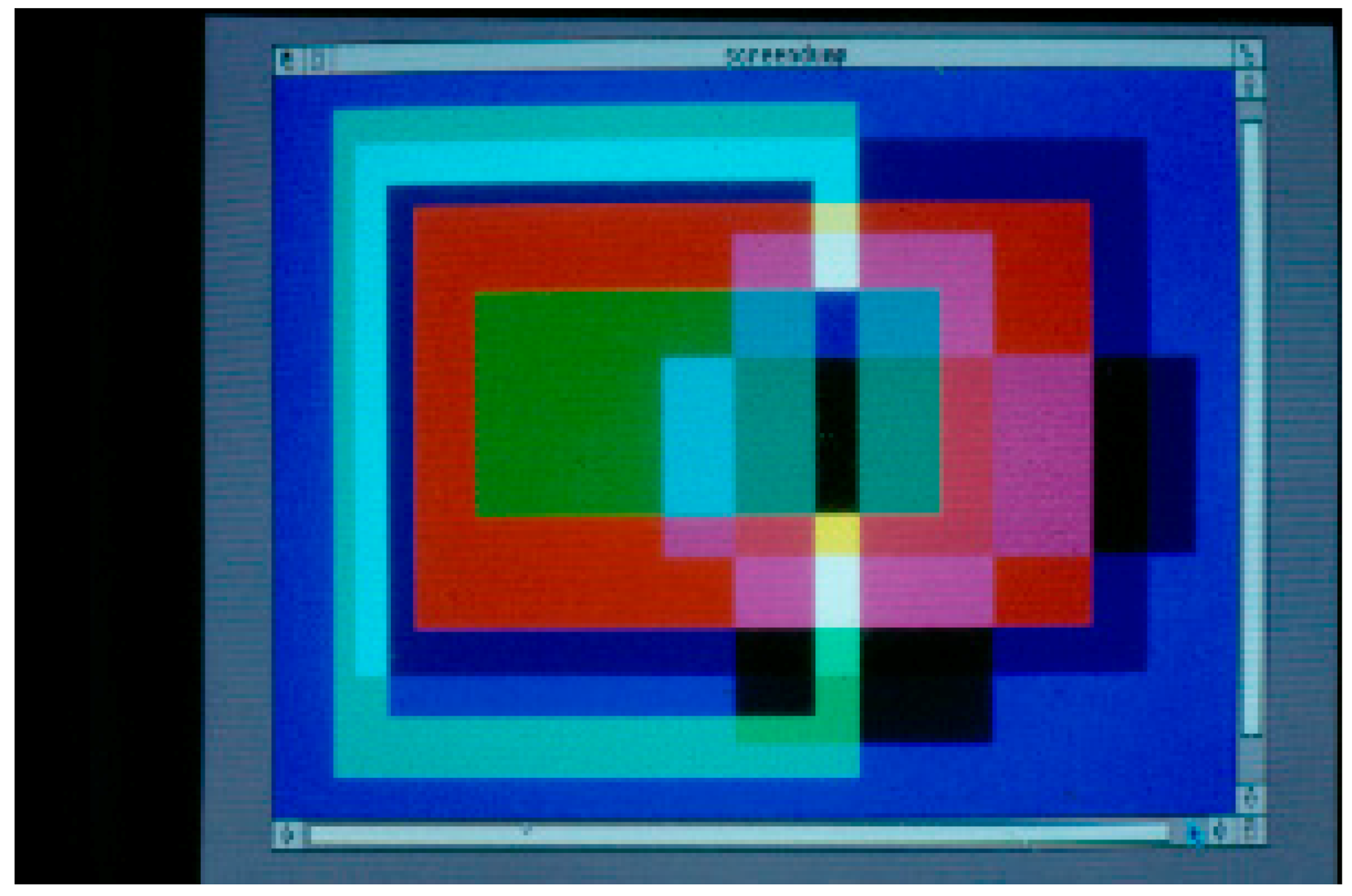
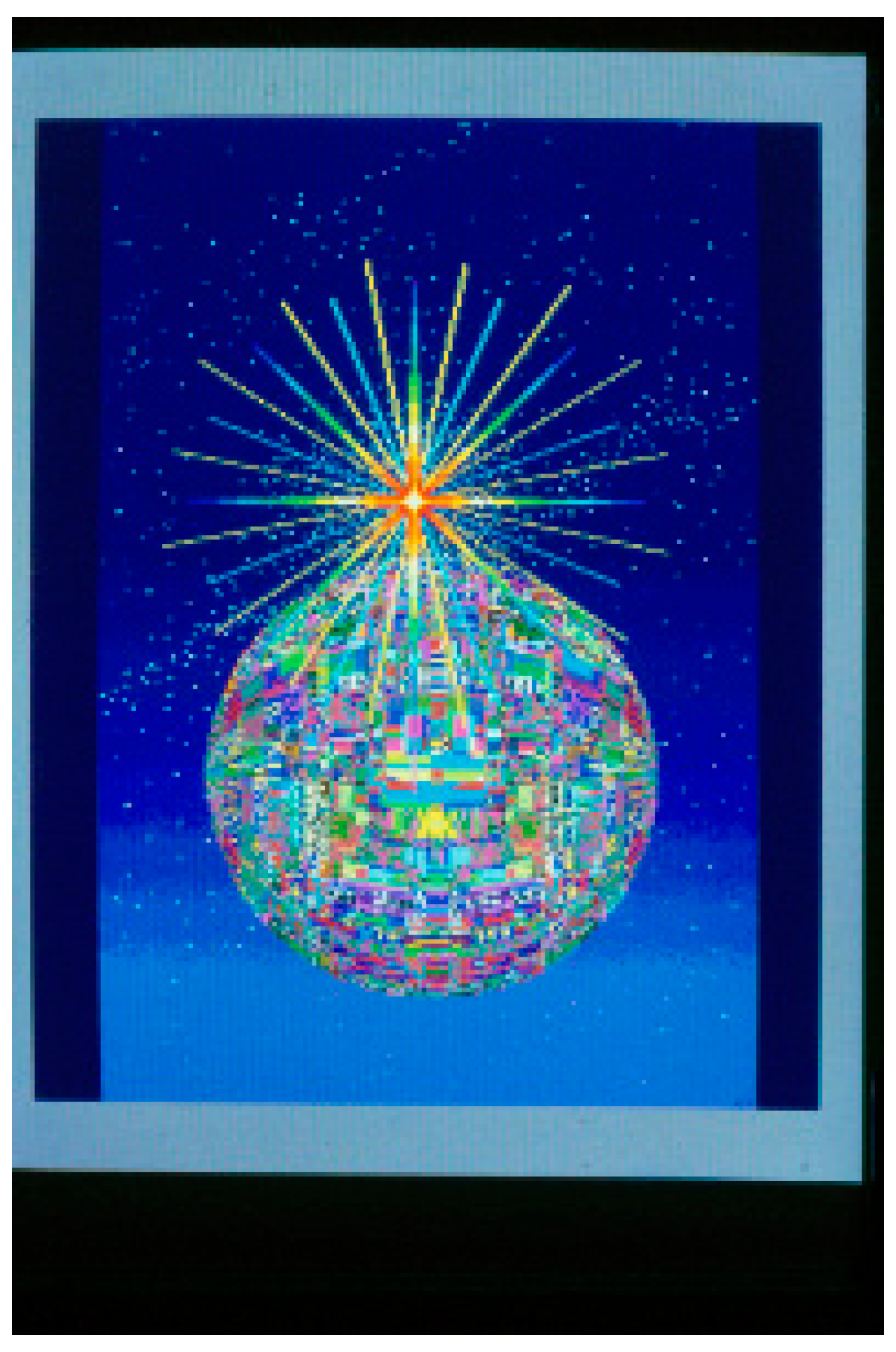
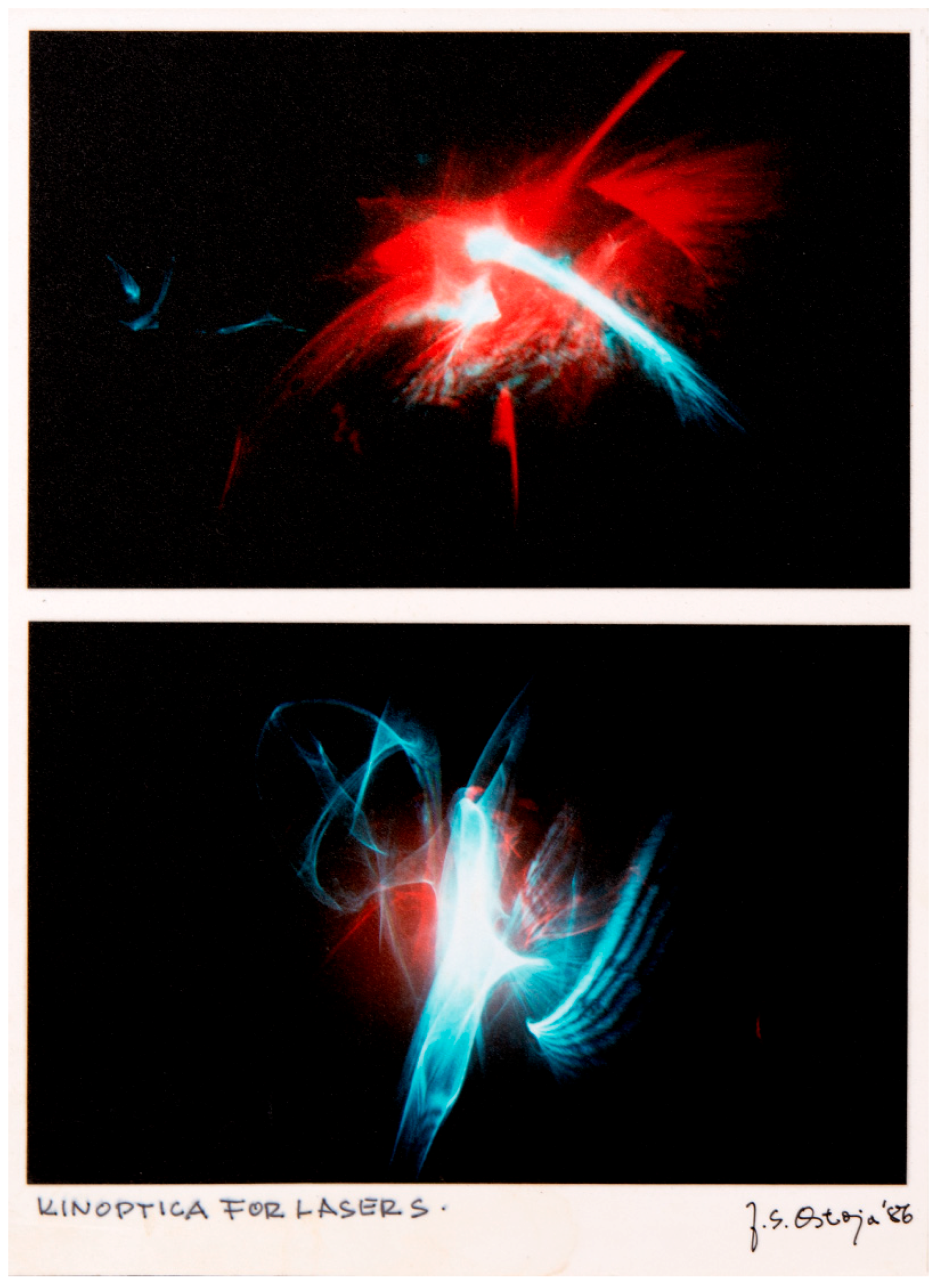
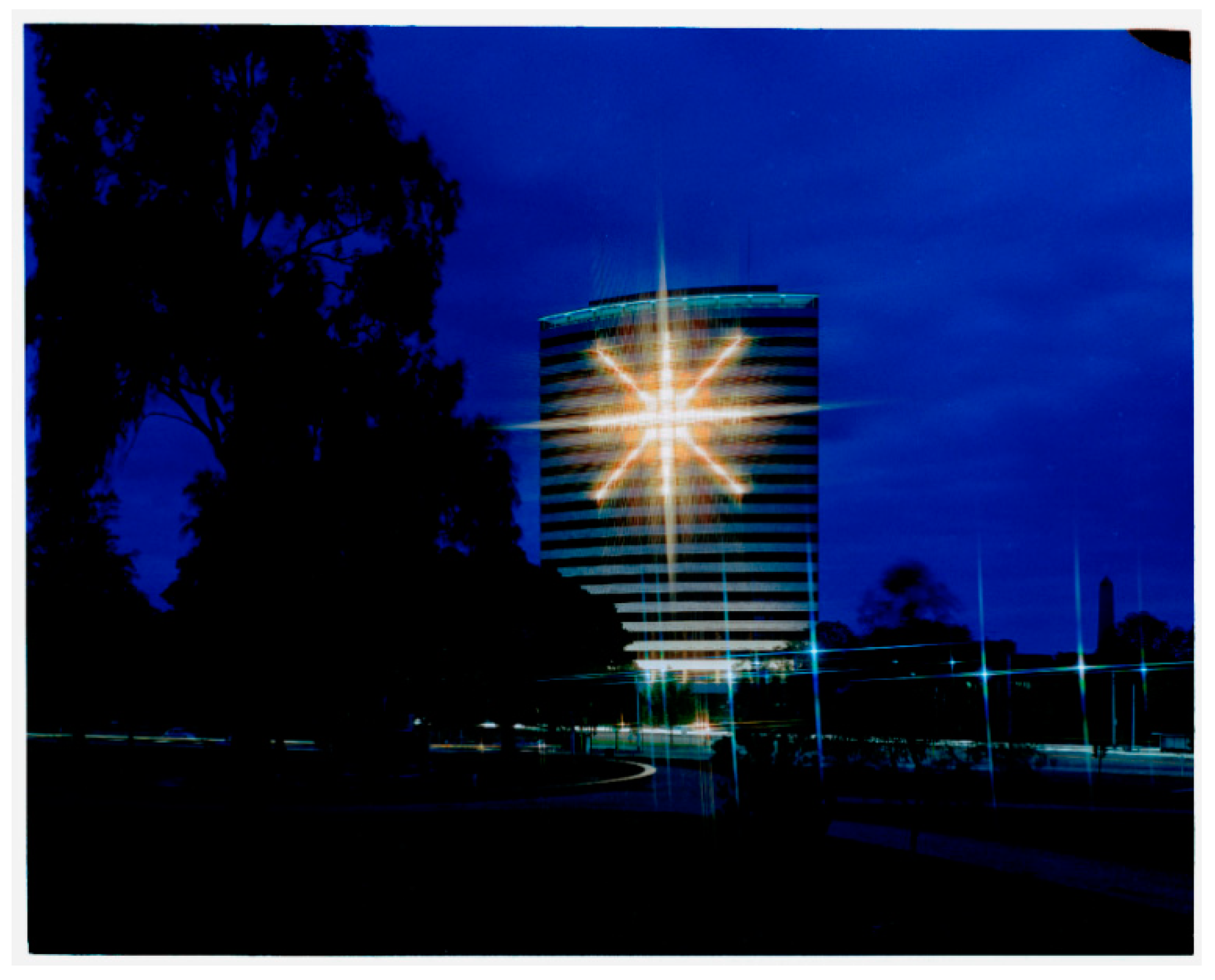
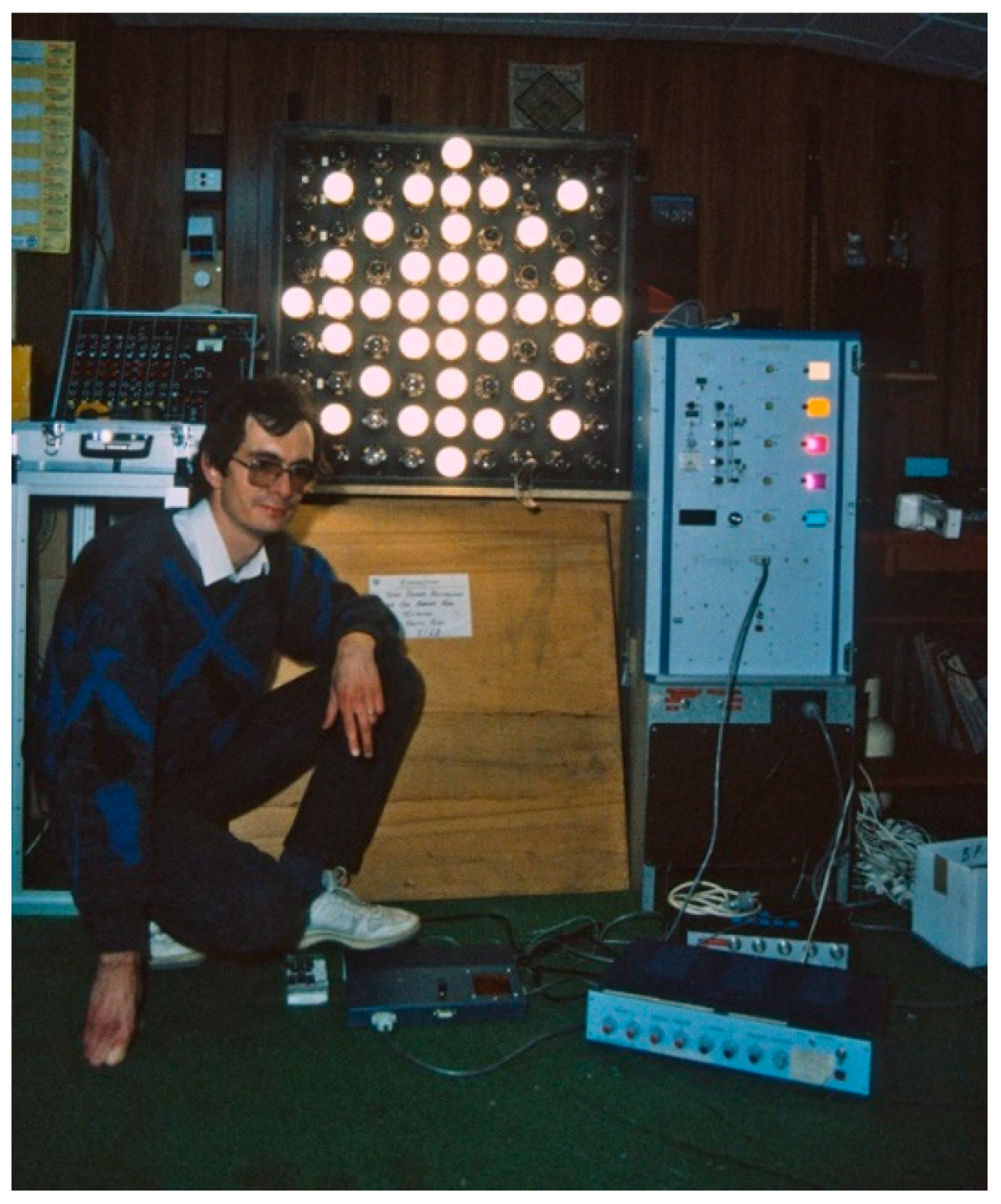
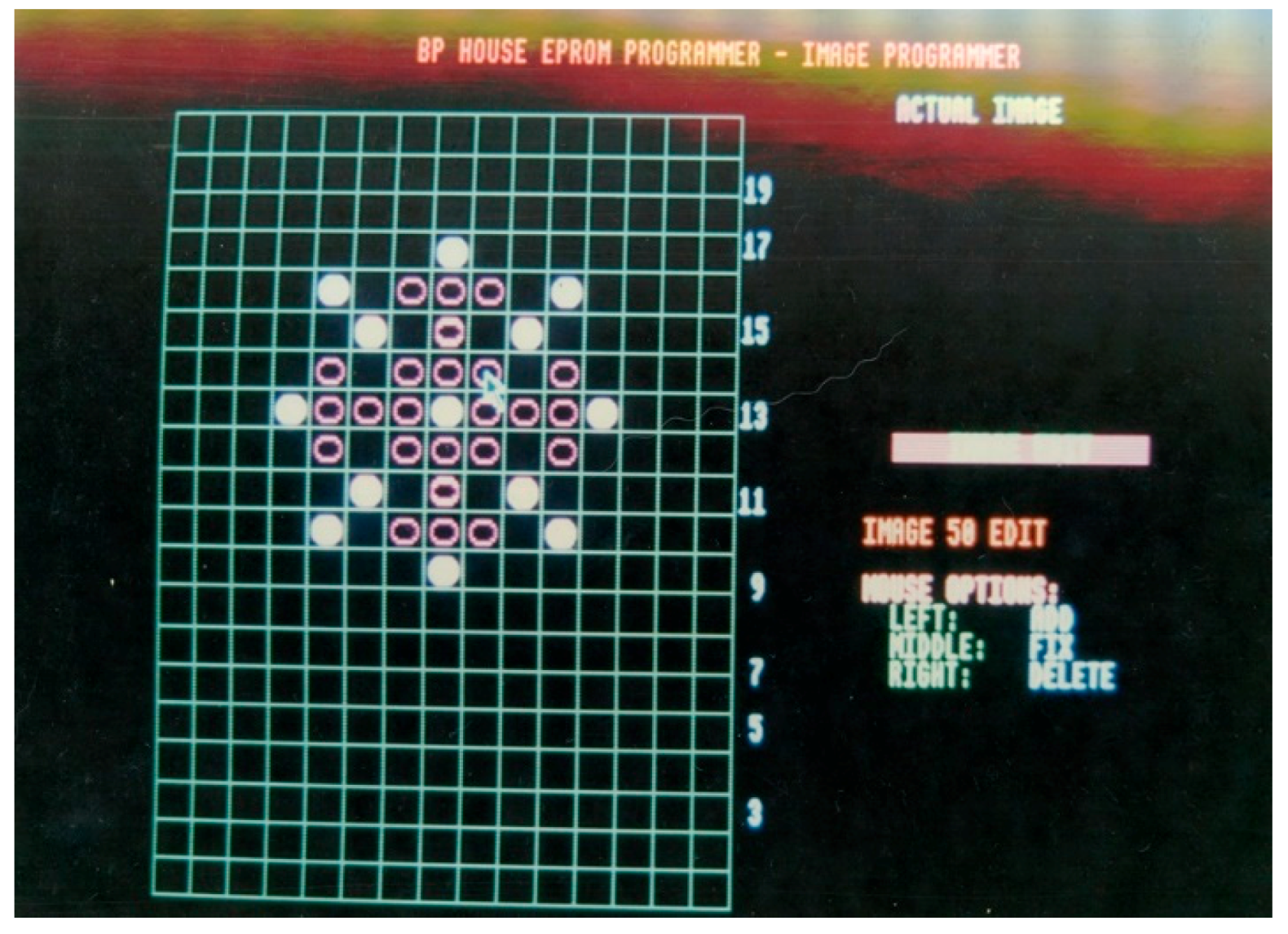
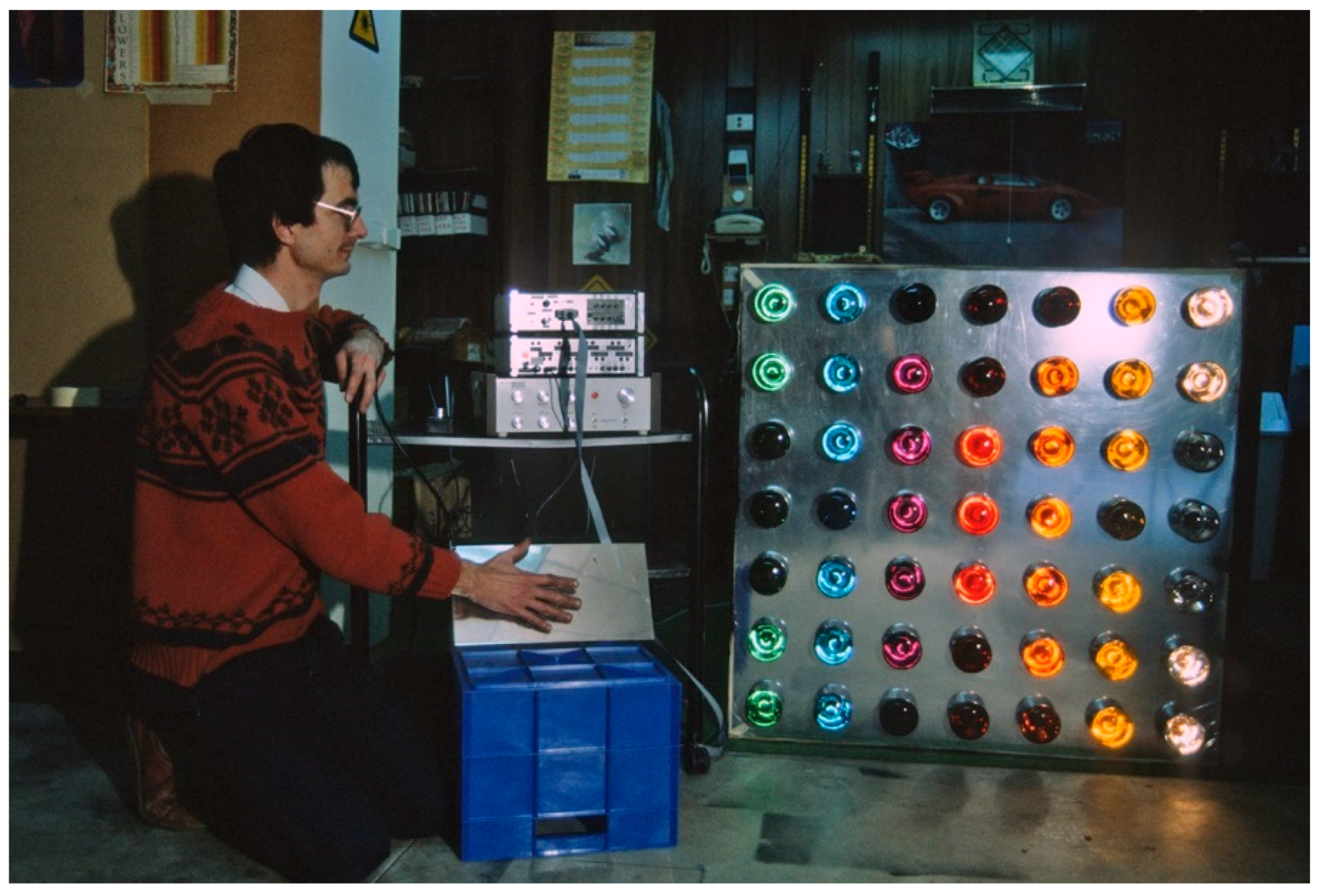
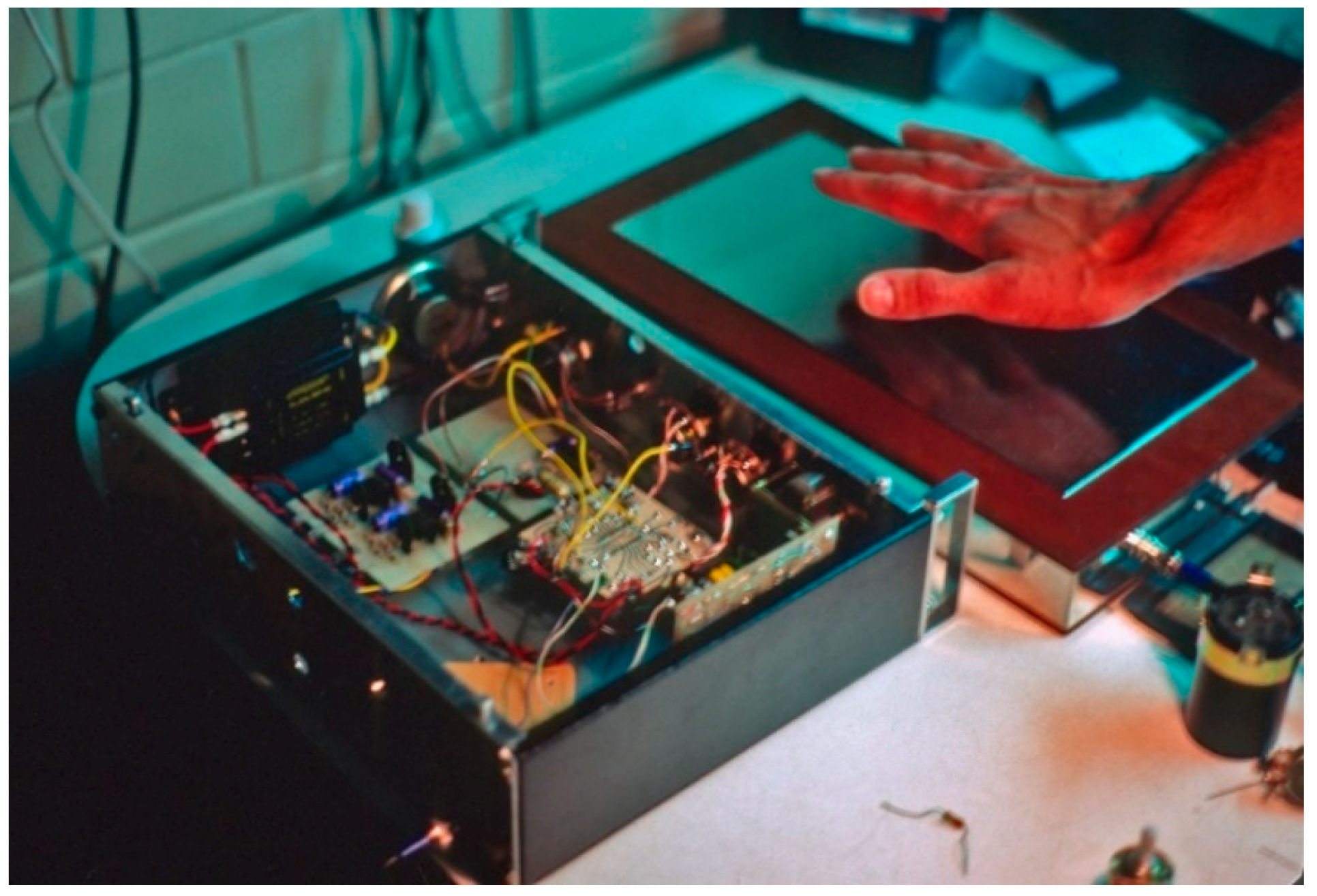
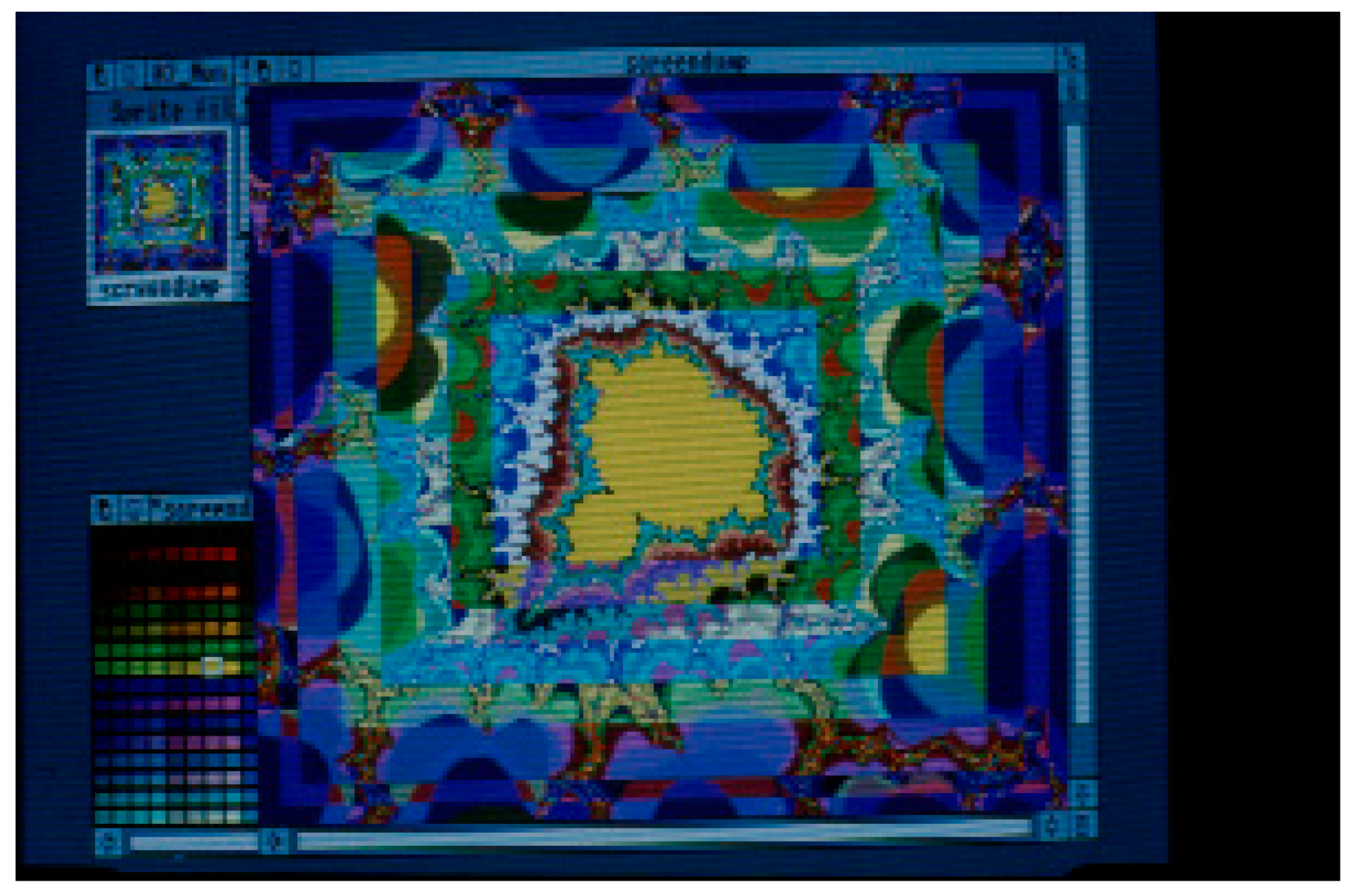
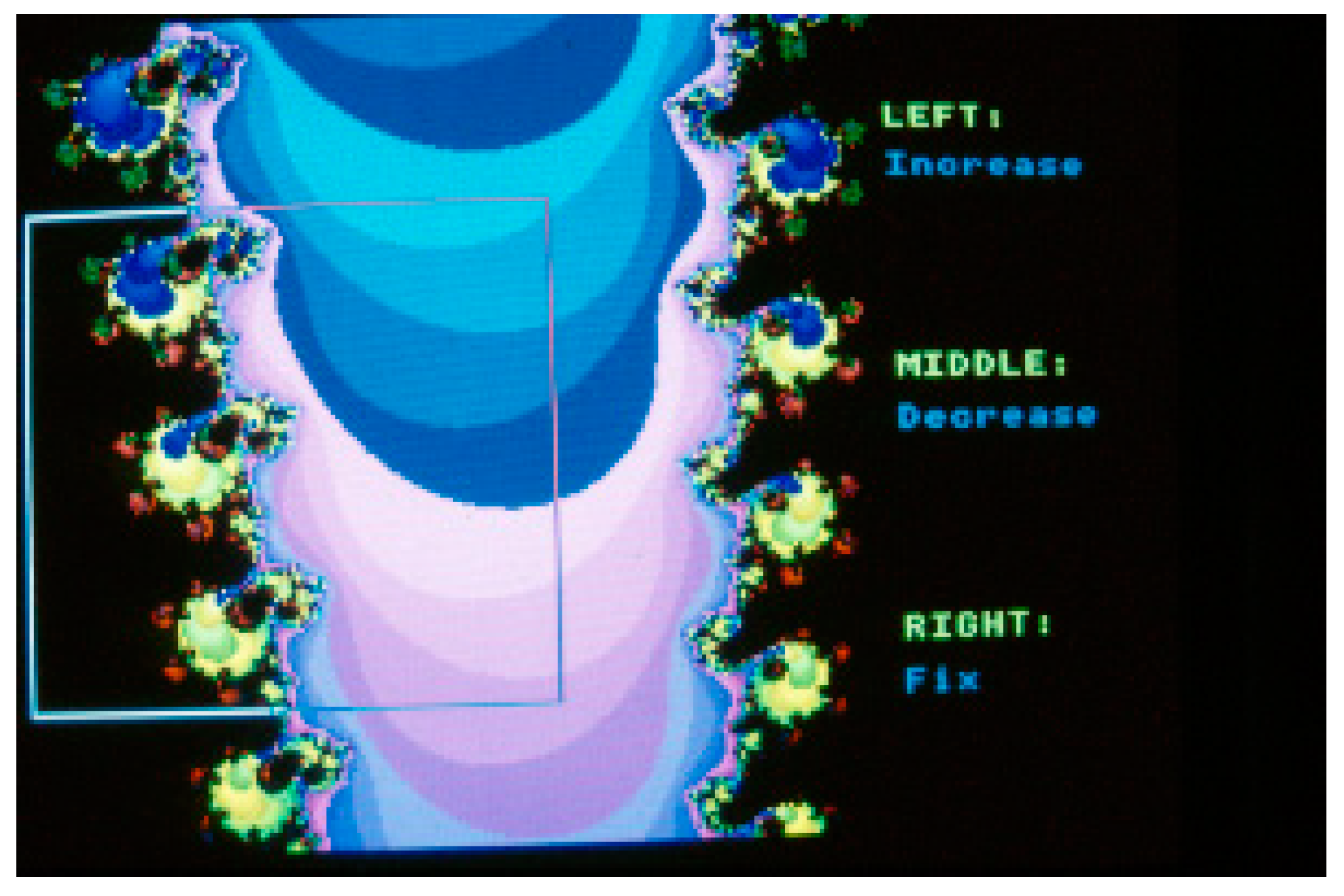
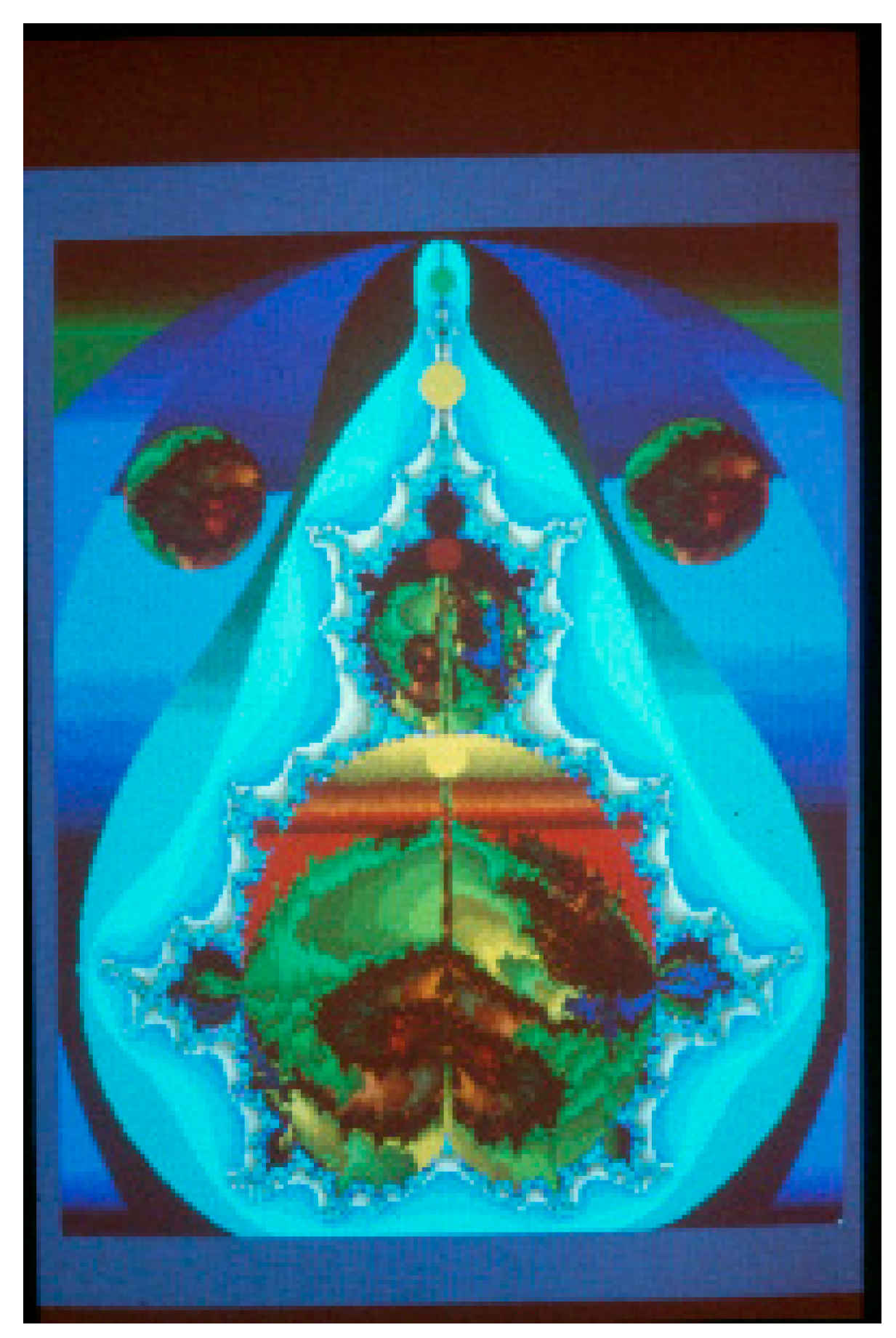
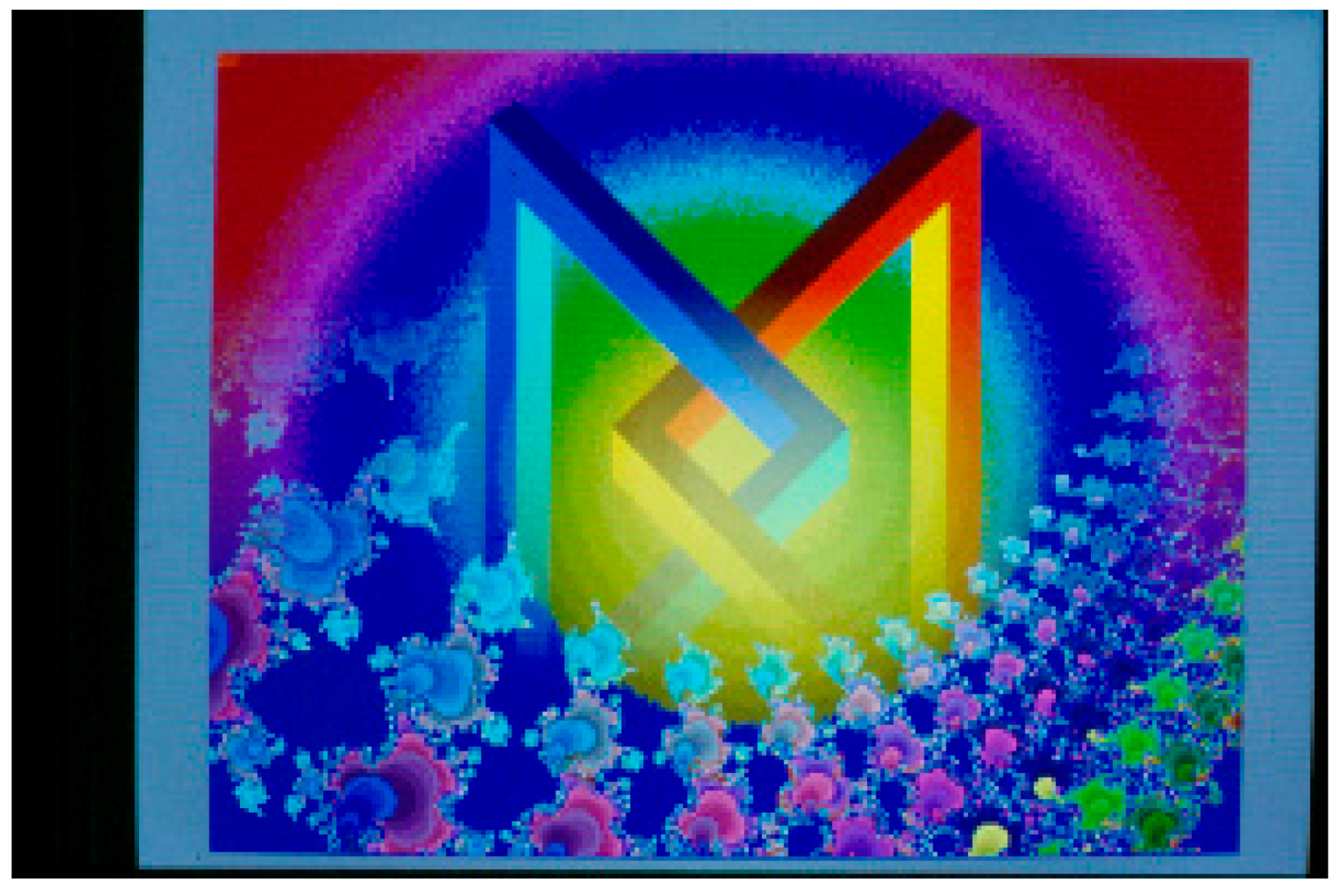
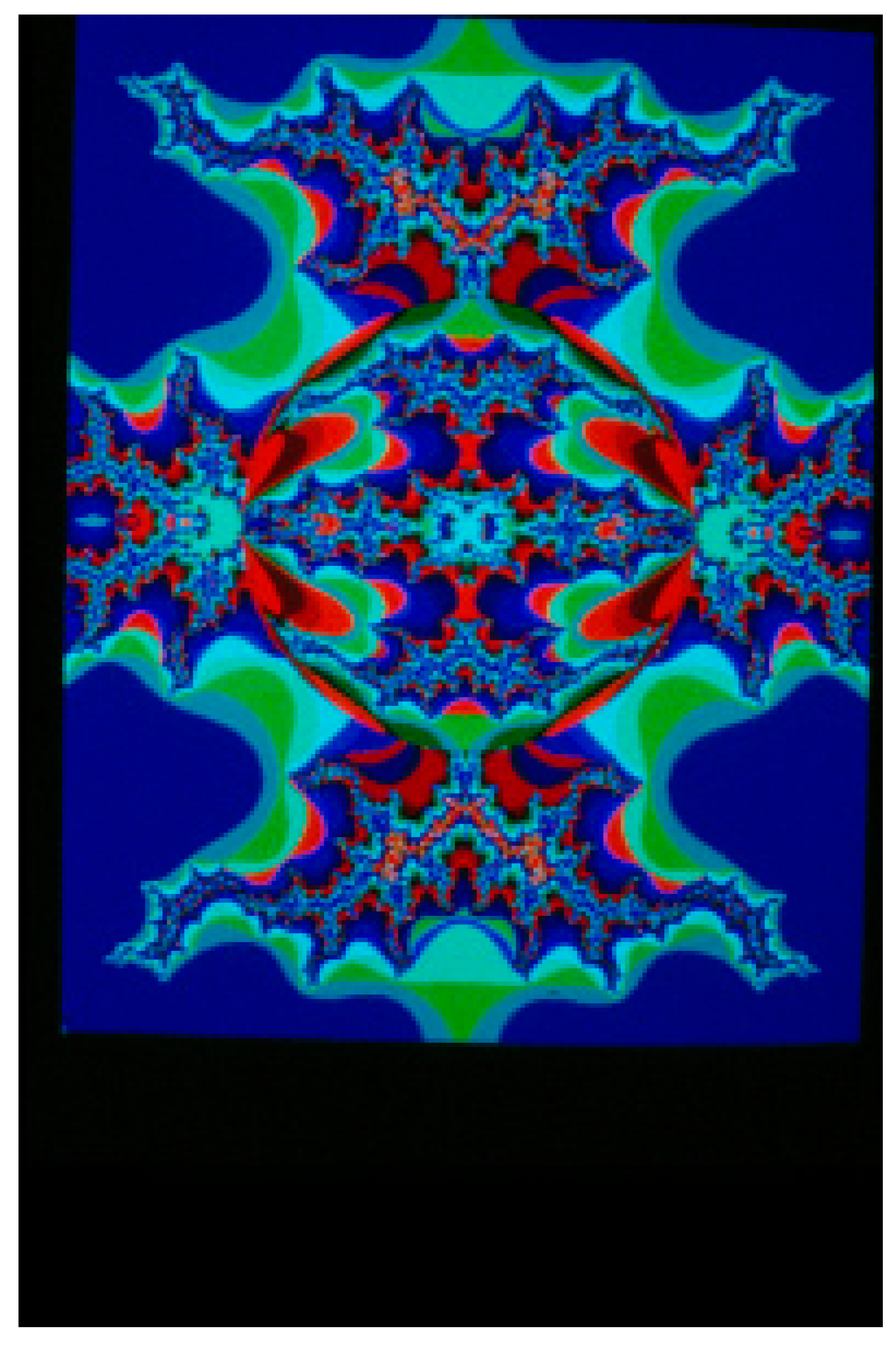
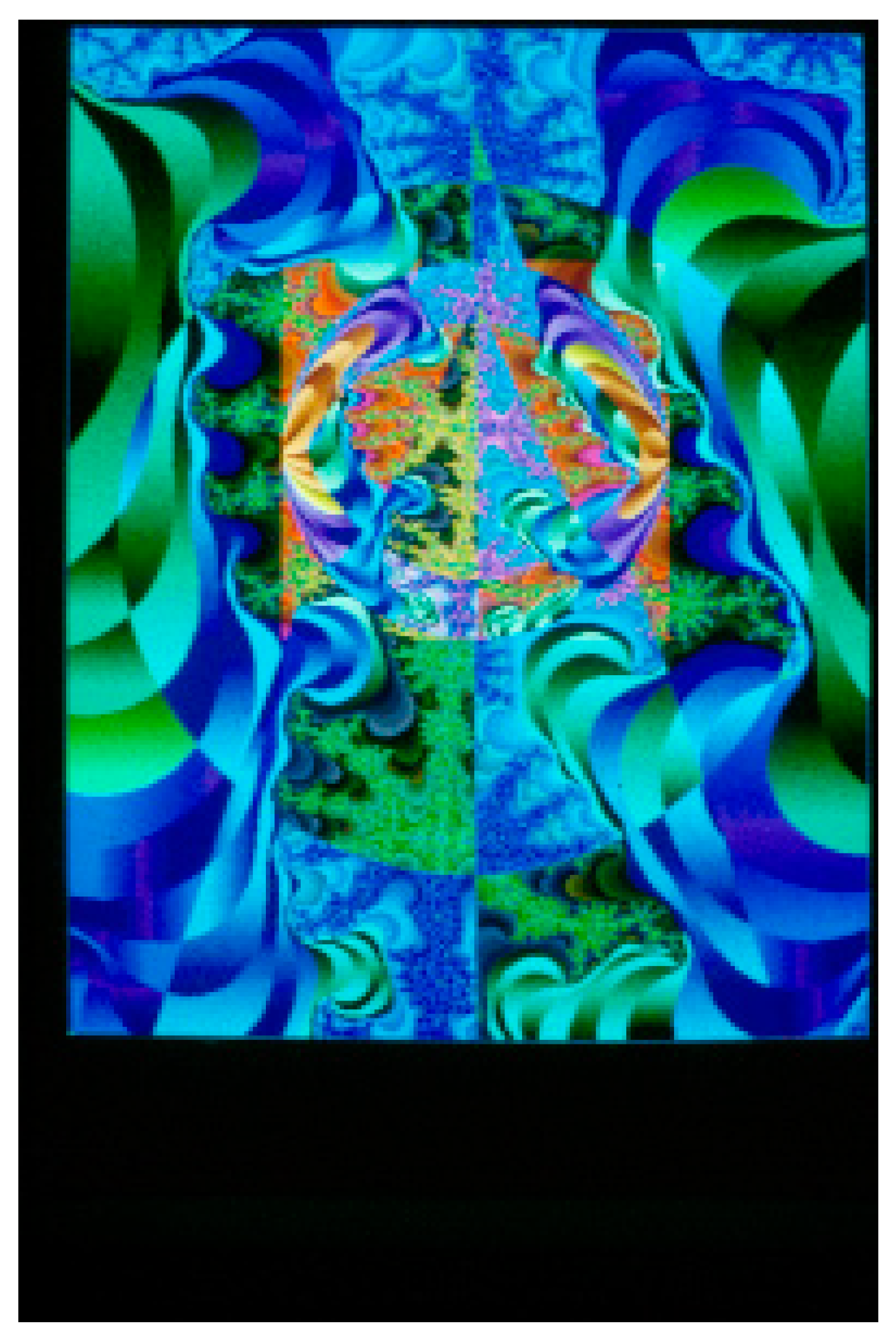
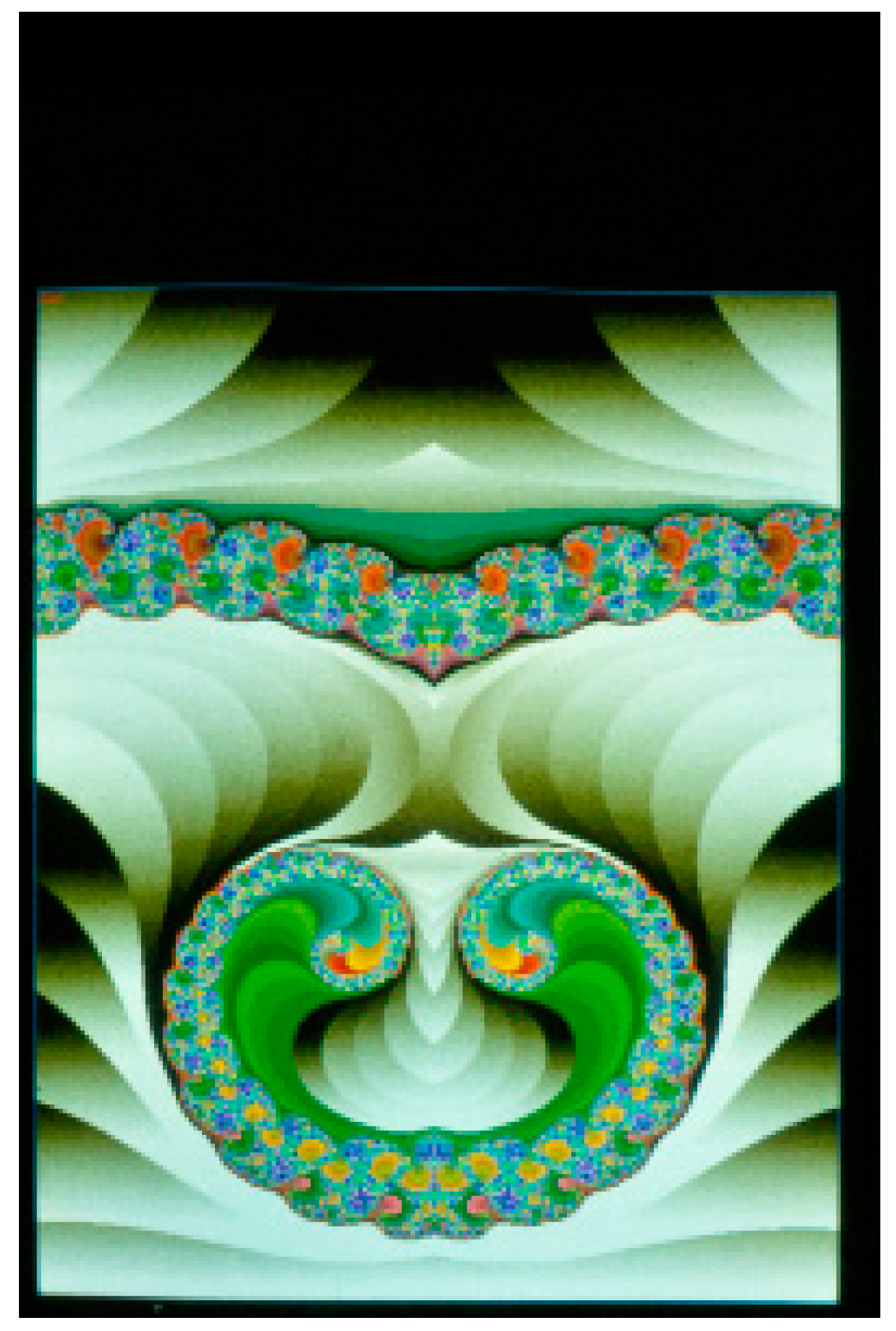
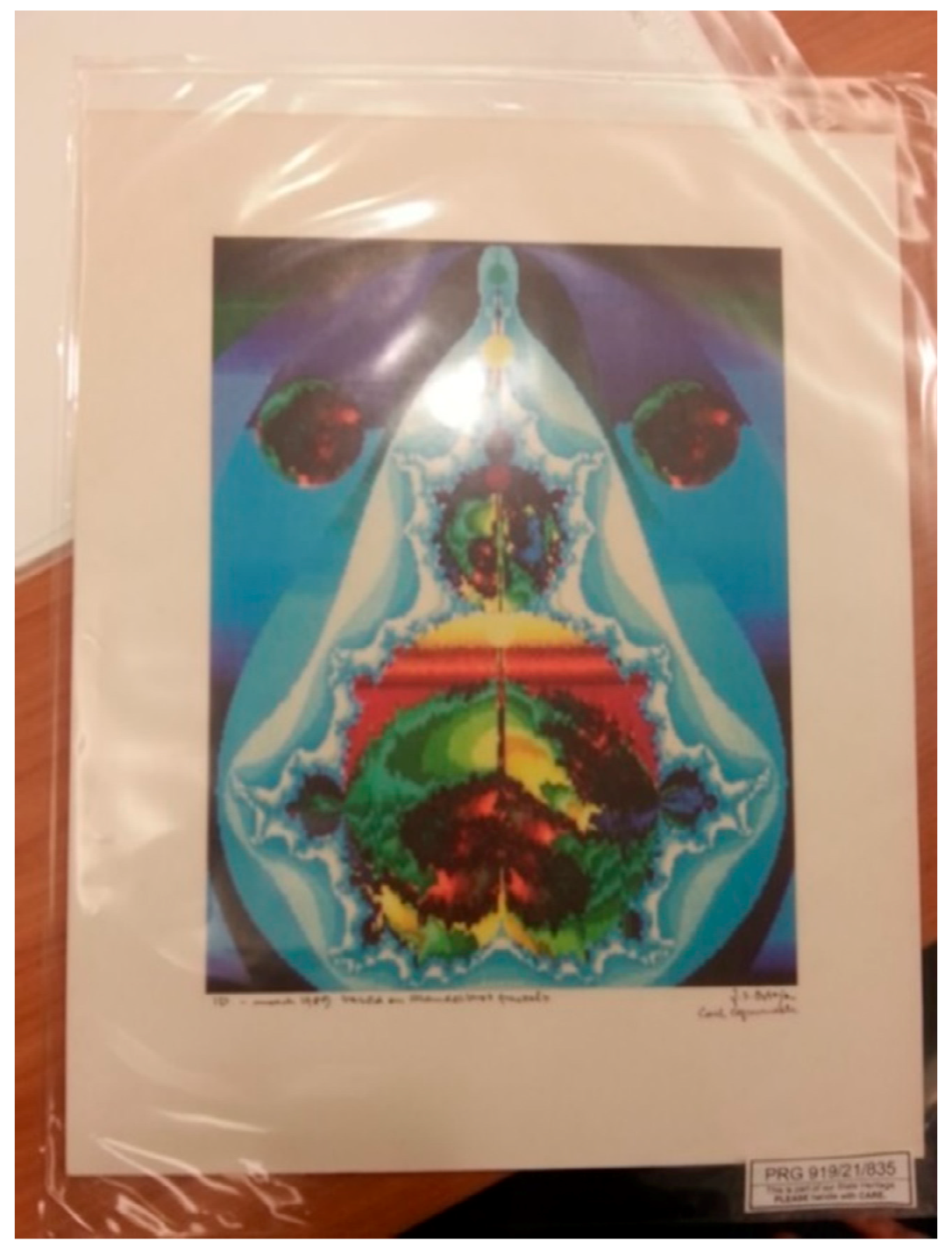
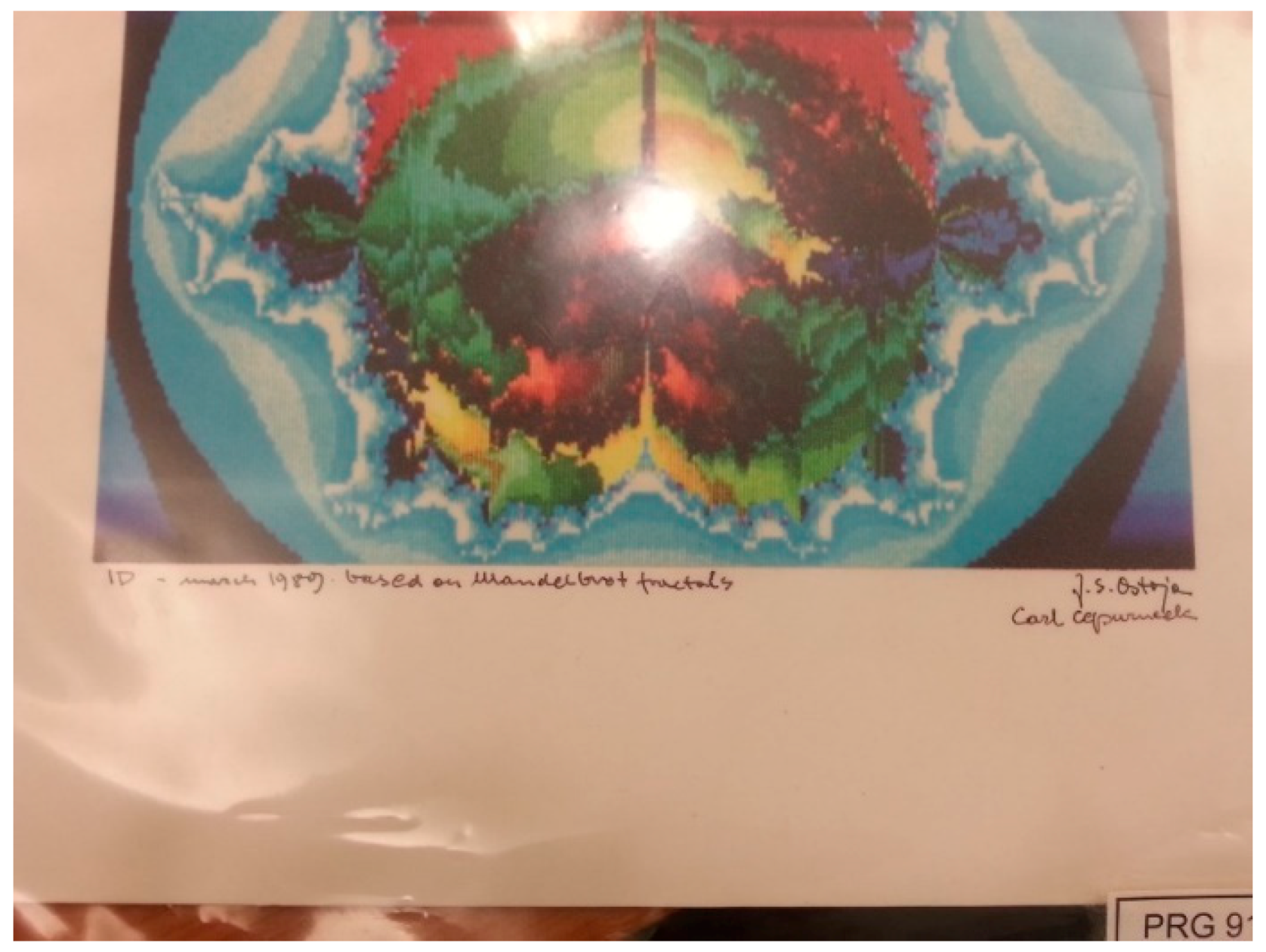
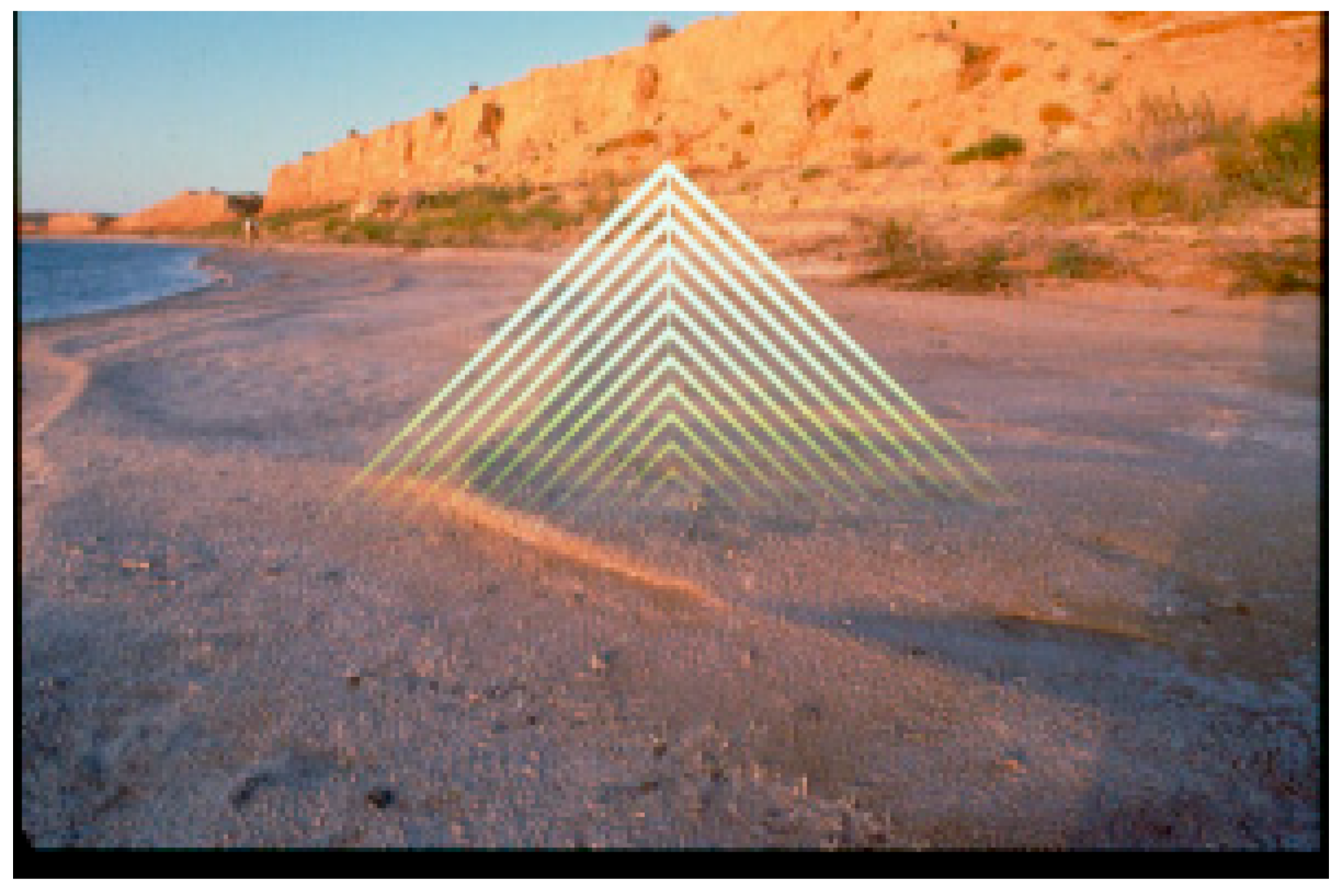
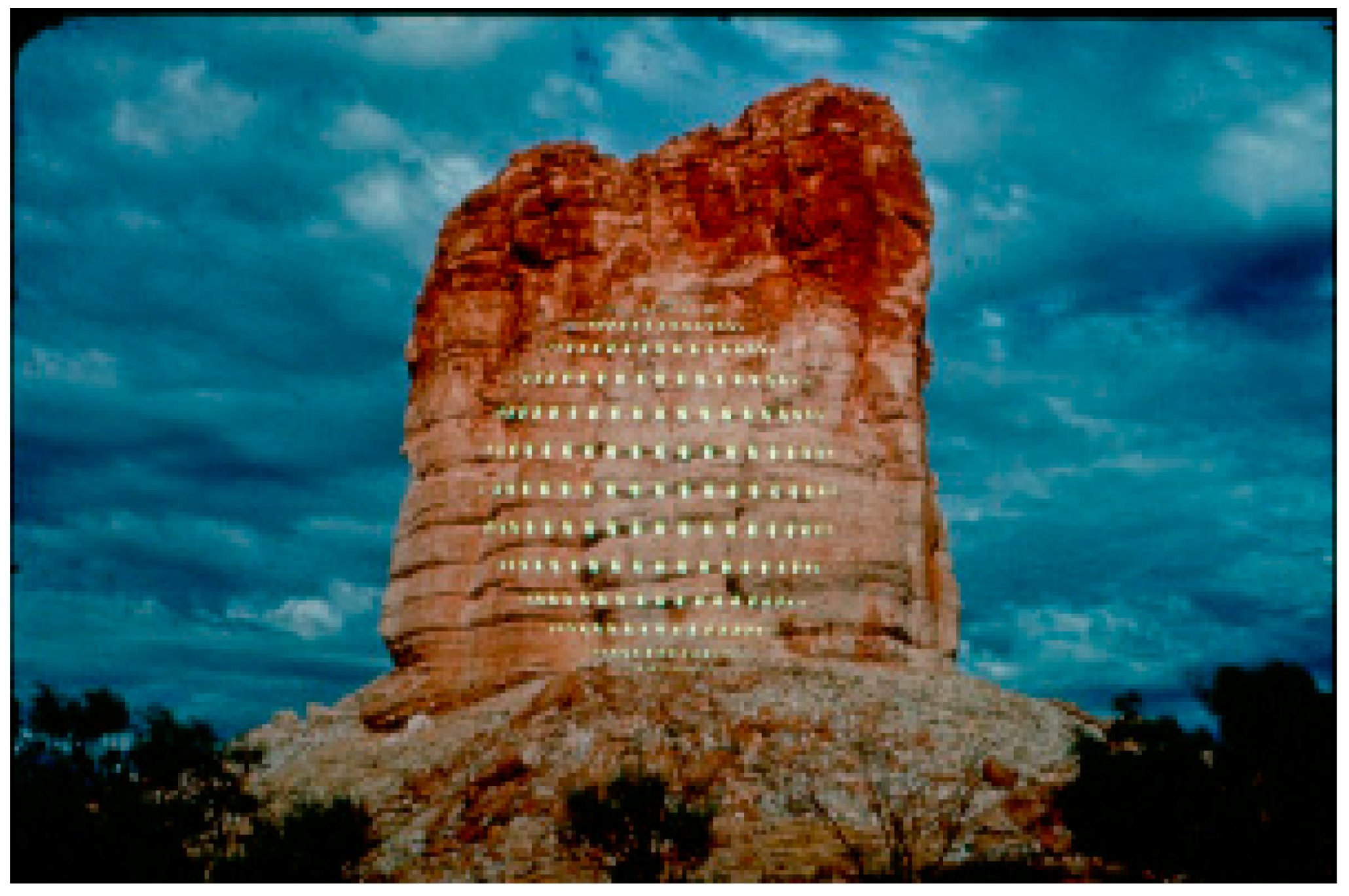
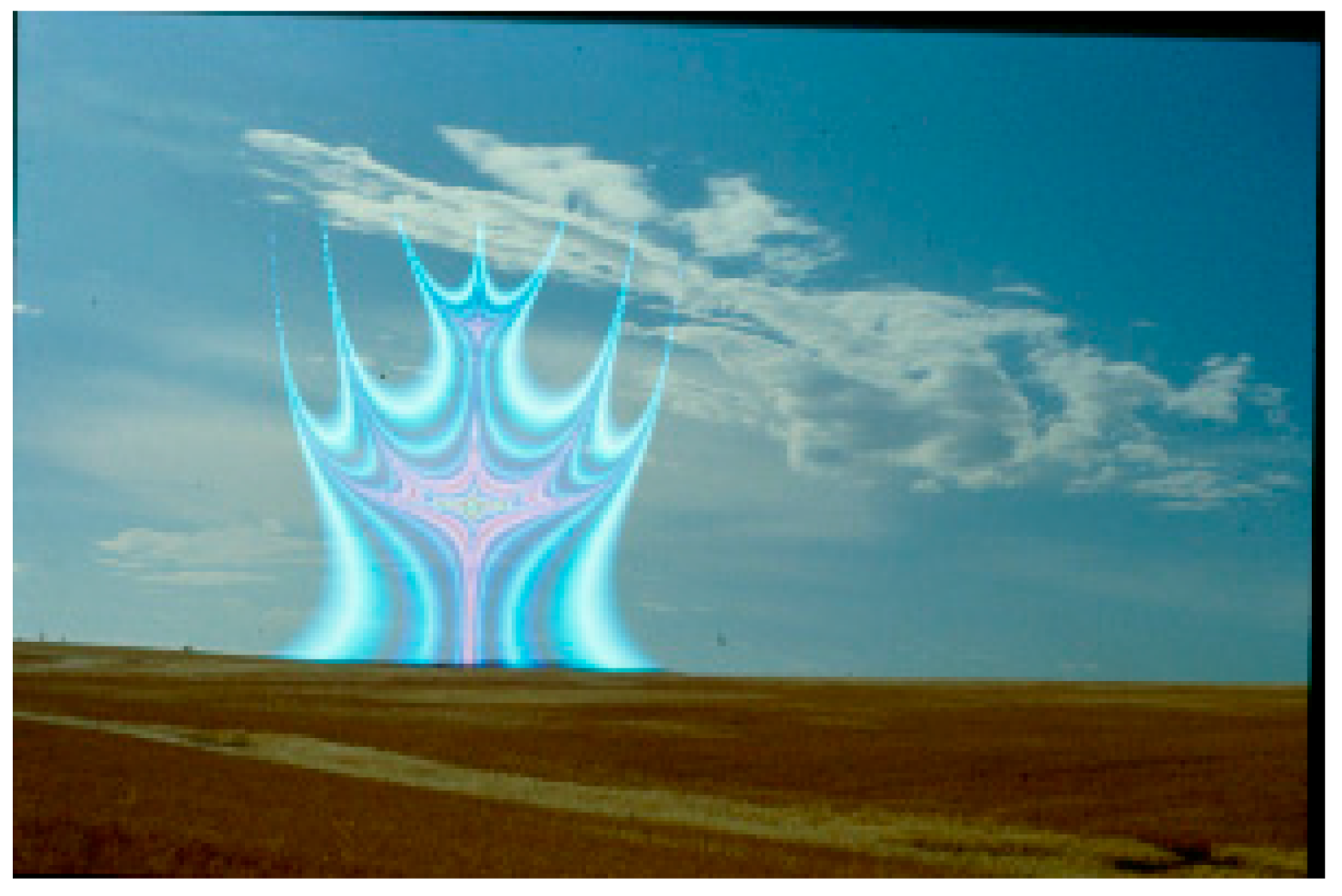
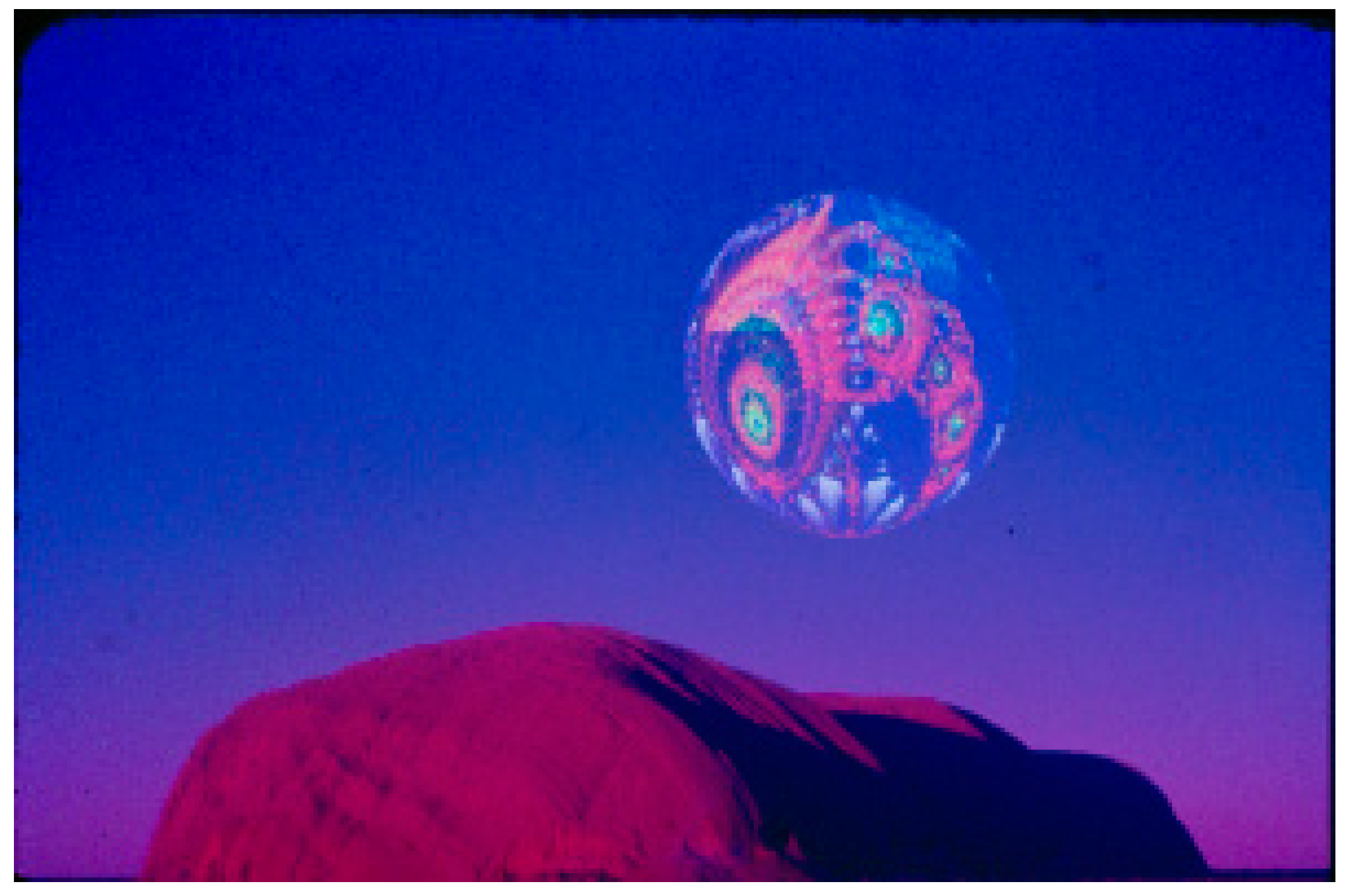
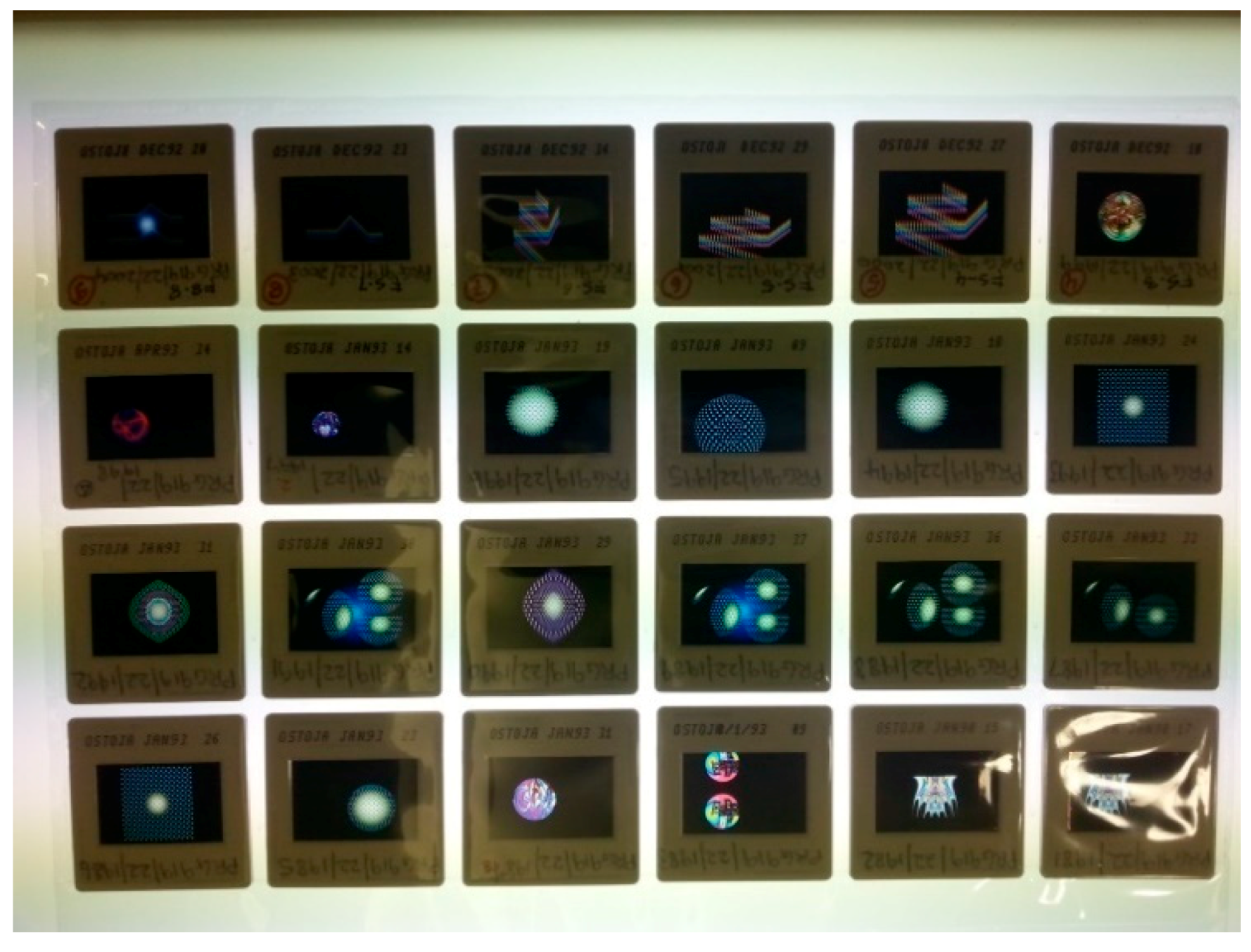
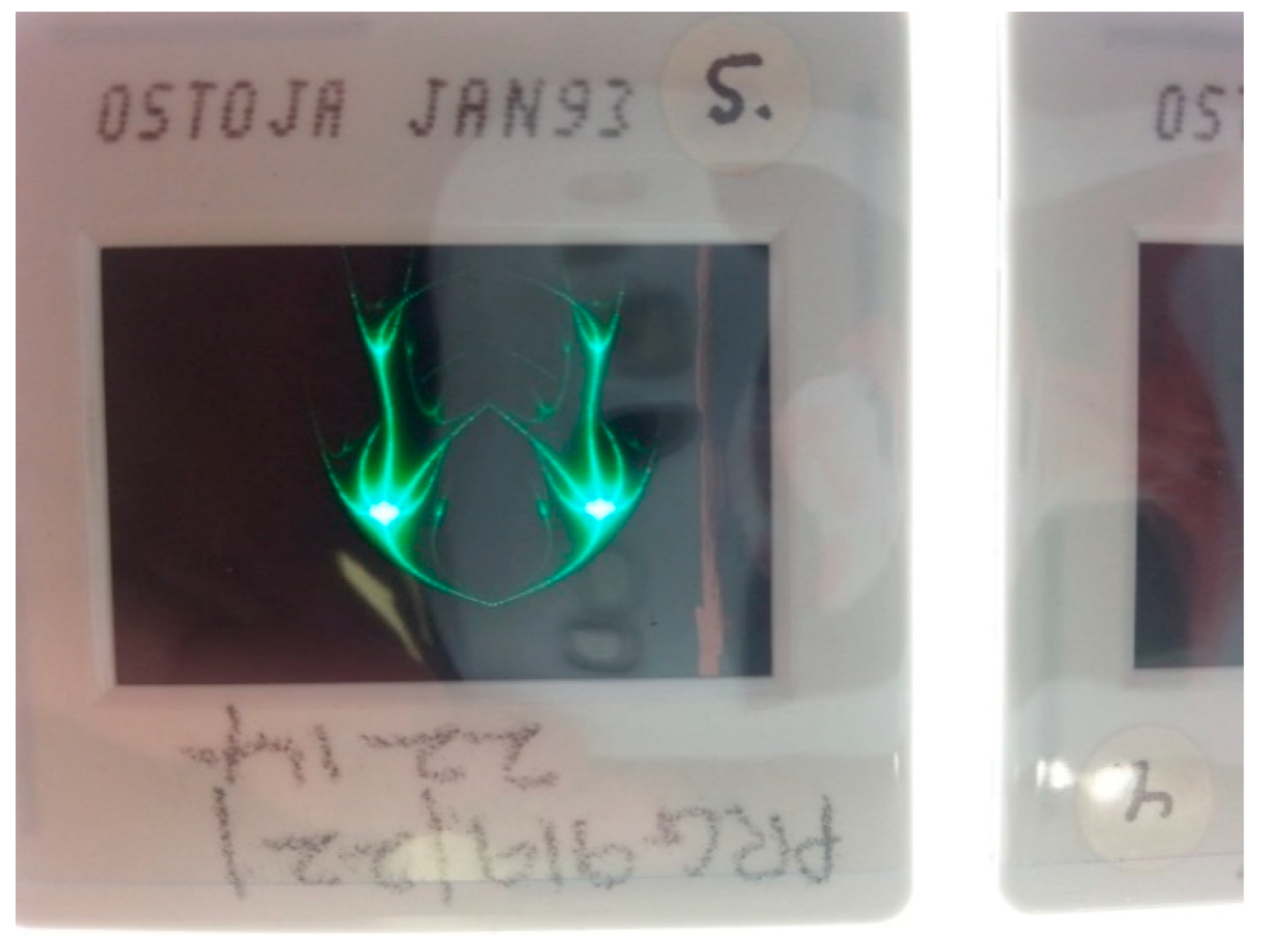
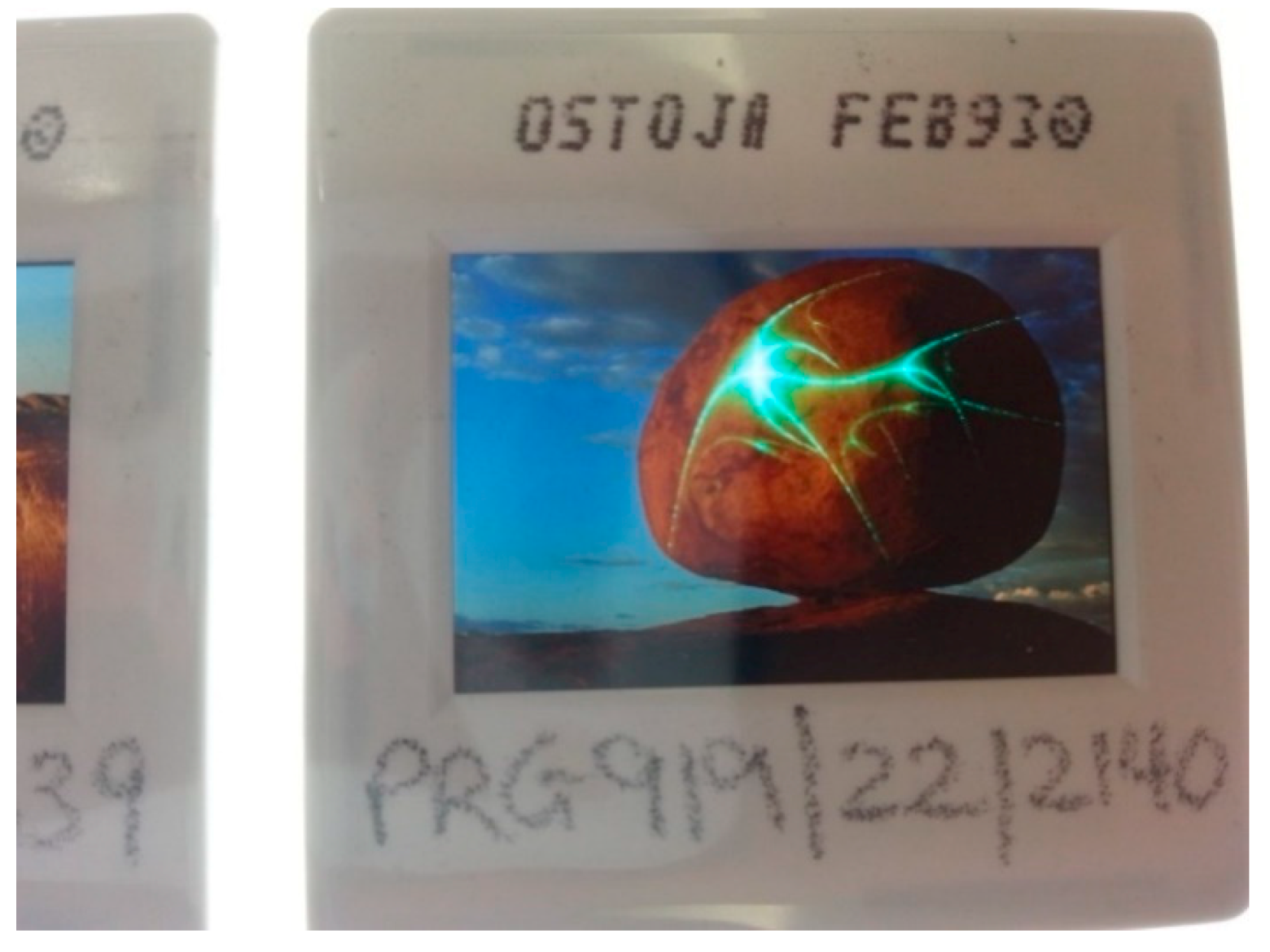
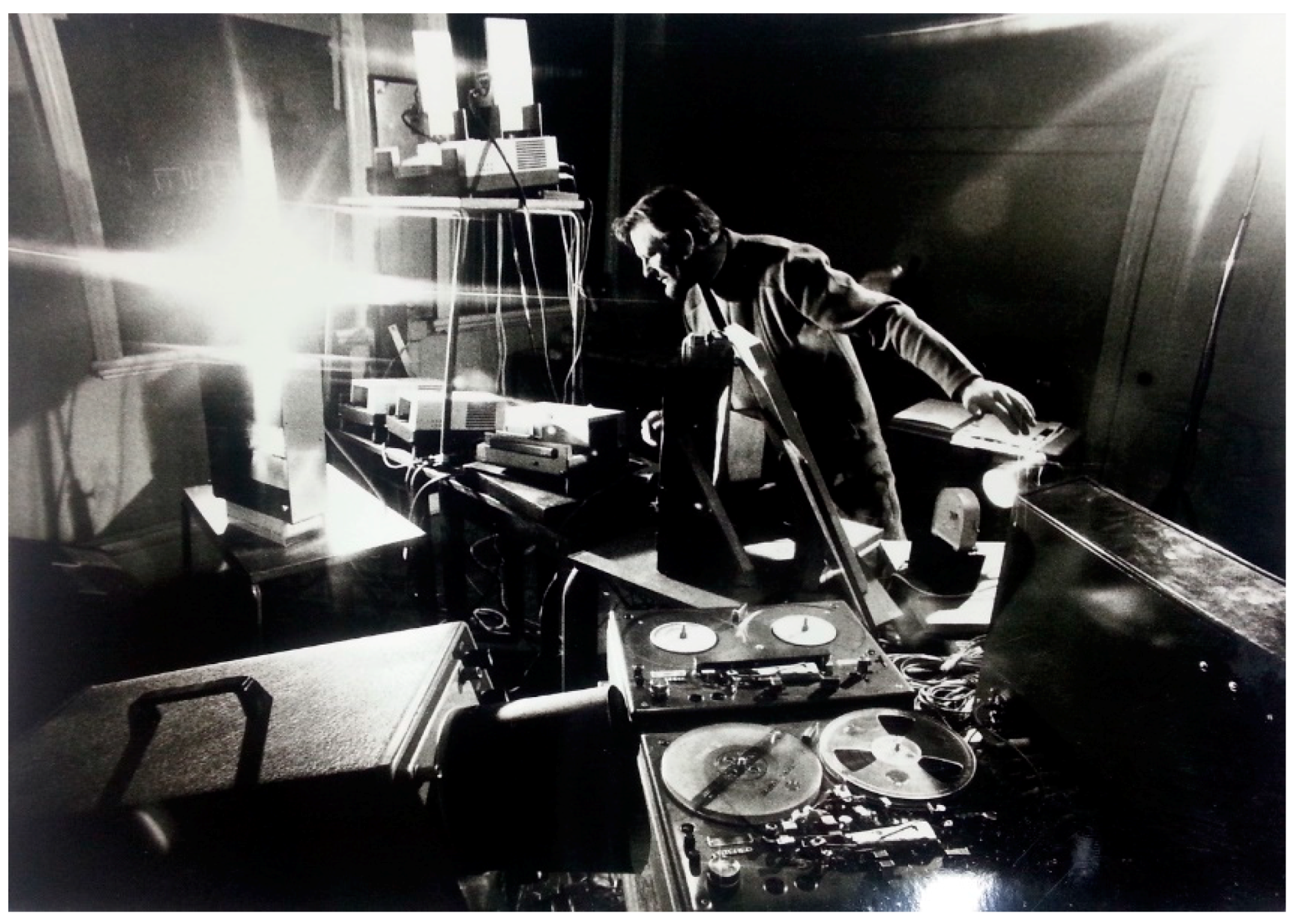
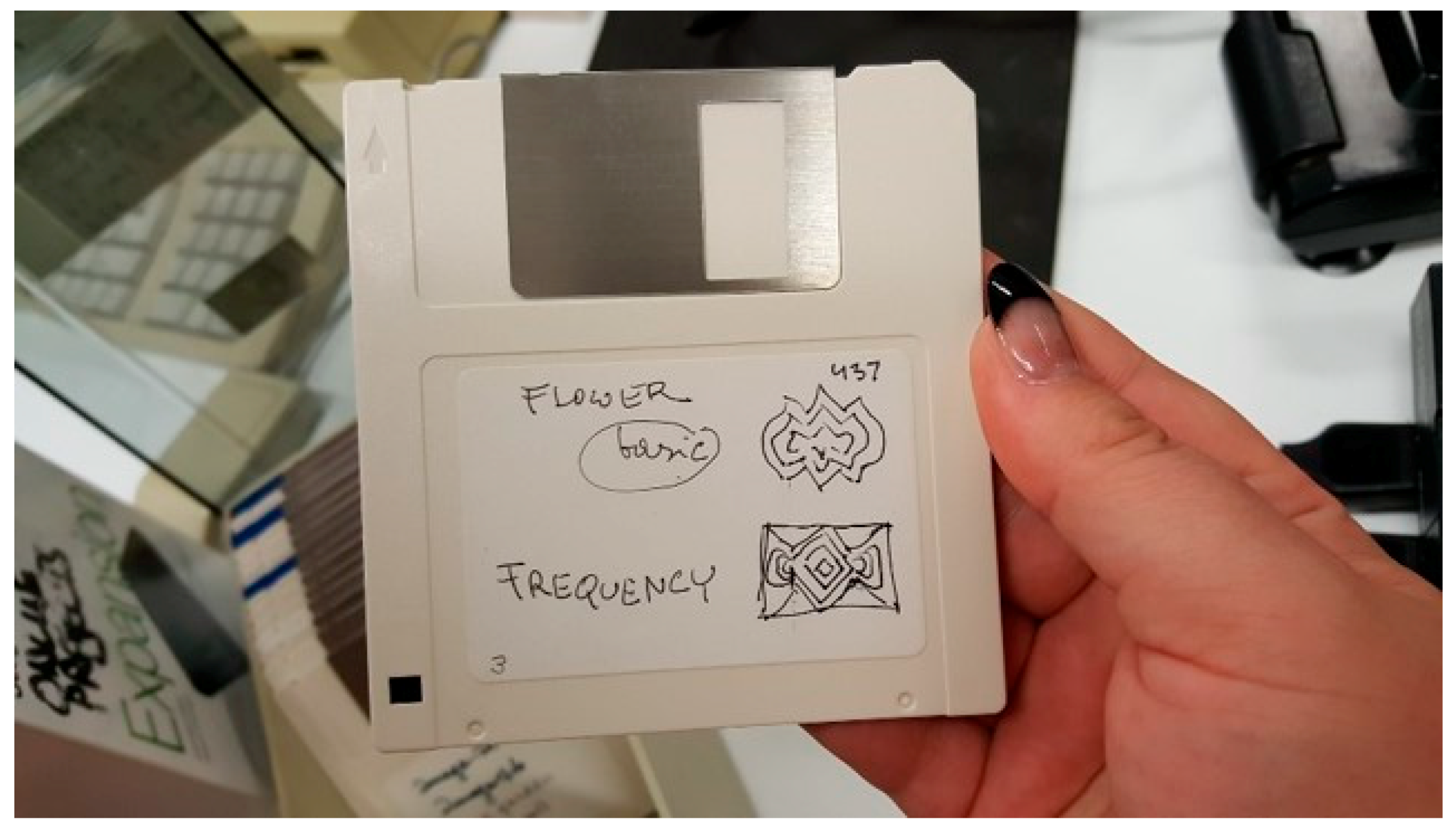
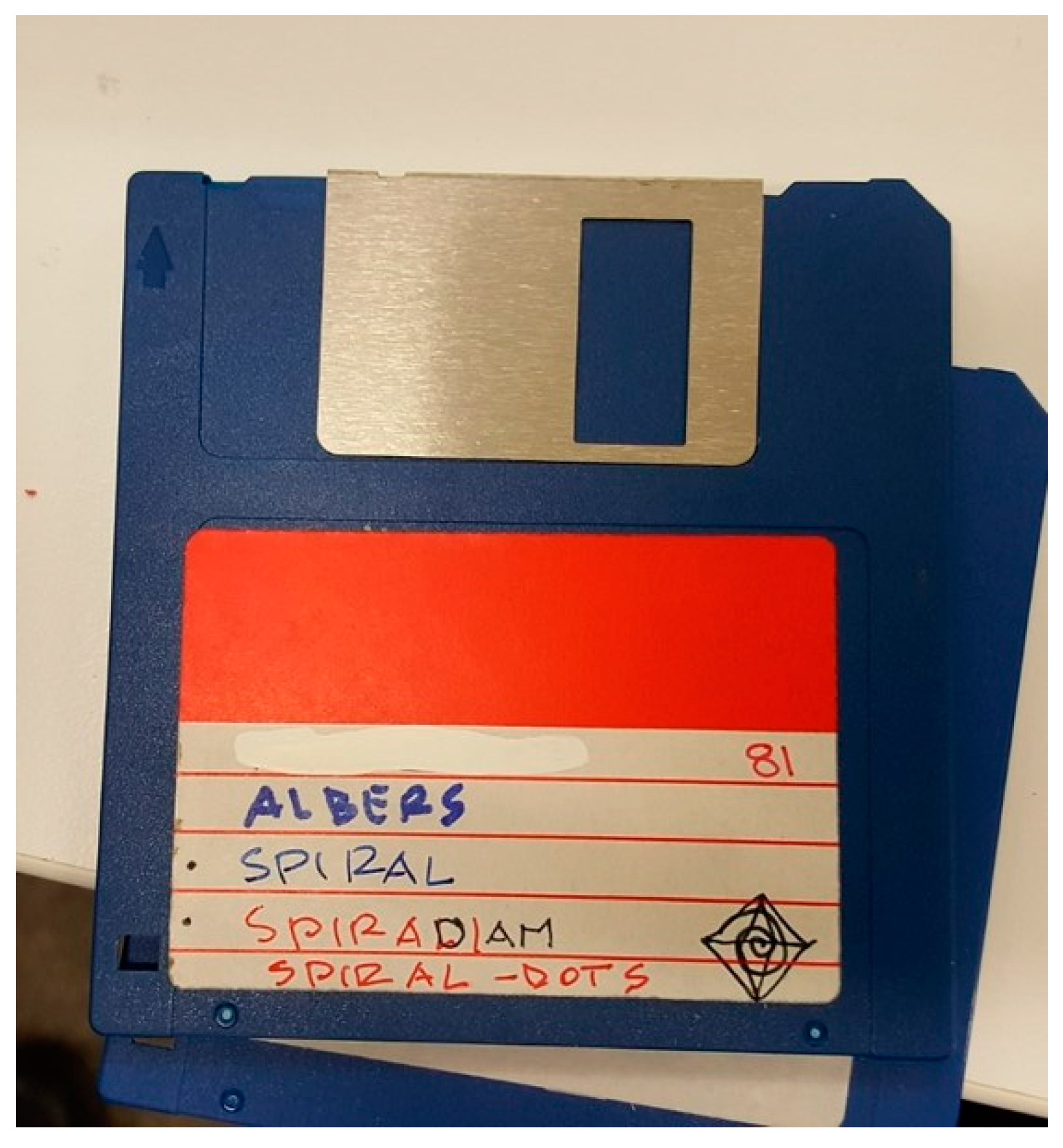
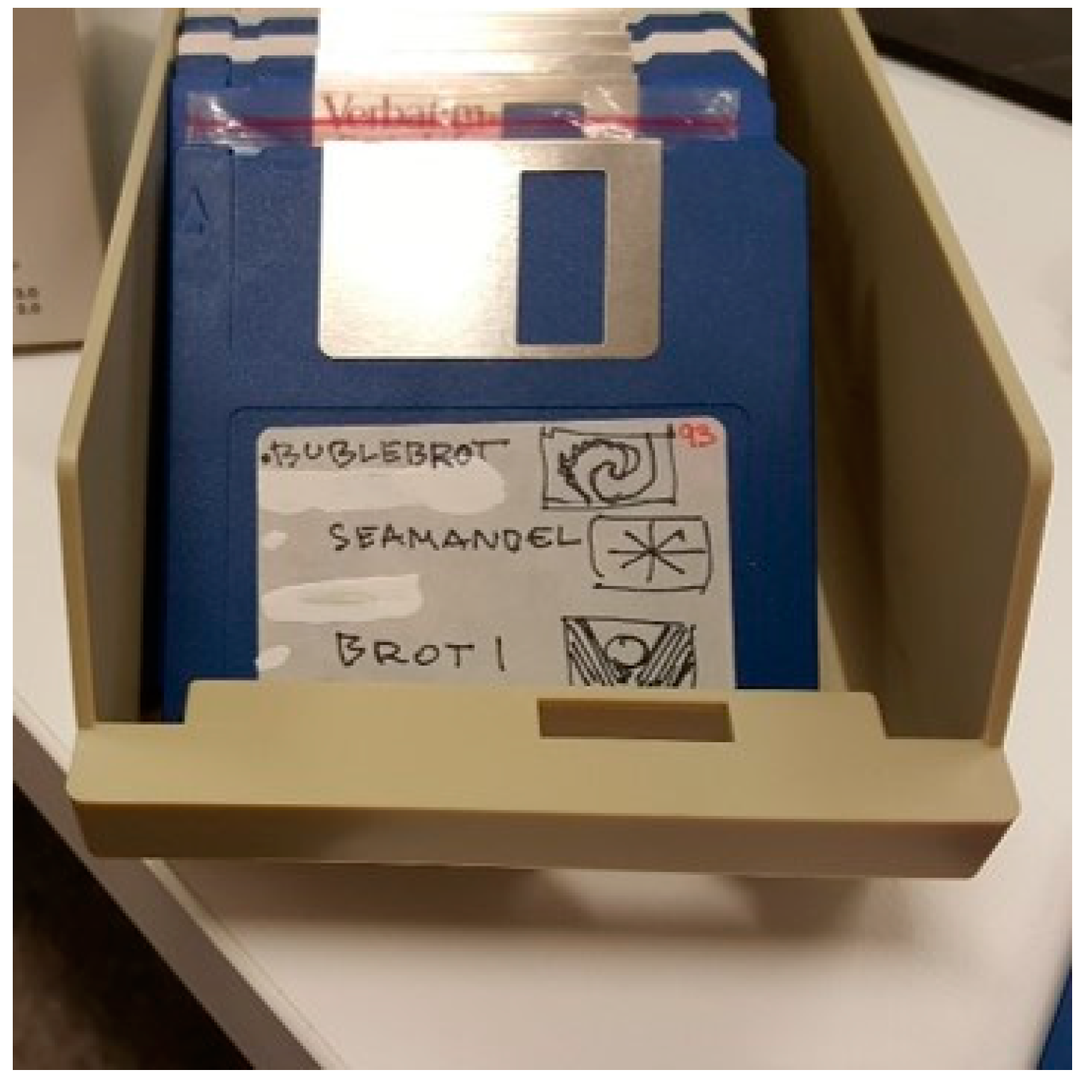
© 2019 by the authors. Licensee MDPI, Basel, Switzerland. This article is an open access article distributed under the terms and conditions of the Creative Commons Attribution (CC BY) license (http://creativecommons.org/licenses/by/4.0/).
Share and Cite
Swalwell, M.; Garda, M.B. Art, Maths, Electronics and Micros: The Late Work of Stan Ostoja-Kotkowski. Arts 2019, 8, 23. https://doi.org/10.3390/arts8010023
Swalwell M, Garda MB. Art, Maths, Electronics and Micros: The Late Work of Stan Ostoja-Kotkowski. Arts. 2019; 8(1):23. https://doi.org/10.3390/arts8010023
Chicago/Turabian StyleSwalwell, Melanie, and Maria B. Garda. 2019. "Art, Maths, Electronics and Micros: The Late Work of Stan Ostoja-Kotkowski" Arts 8, no. 1: 23. https://doi.org/10.3390/arts8010023
APA StyleSwalwell, M., & Garda, M. B. (2019). Art, Maths, Electronics and Micros: The Late Work of Stan Ostoja-Kotkowski. Arts, 8(1), 23. https://doi.org/10.3390/arts8010023





